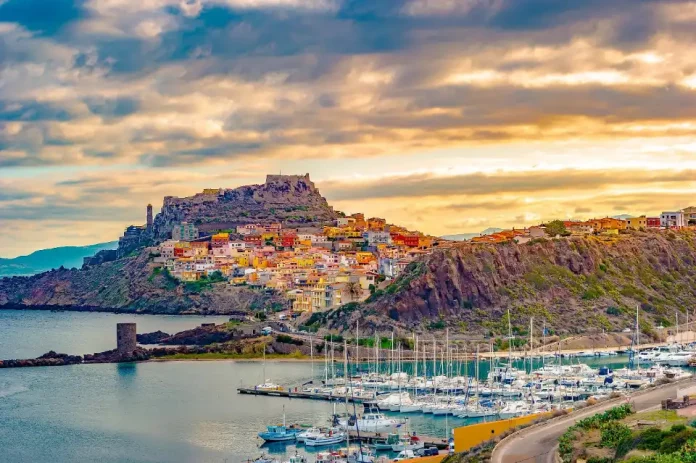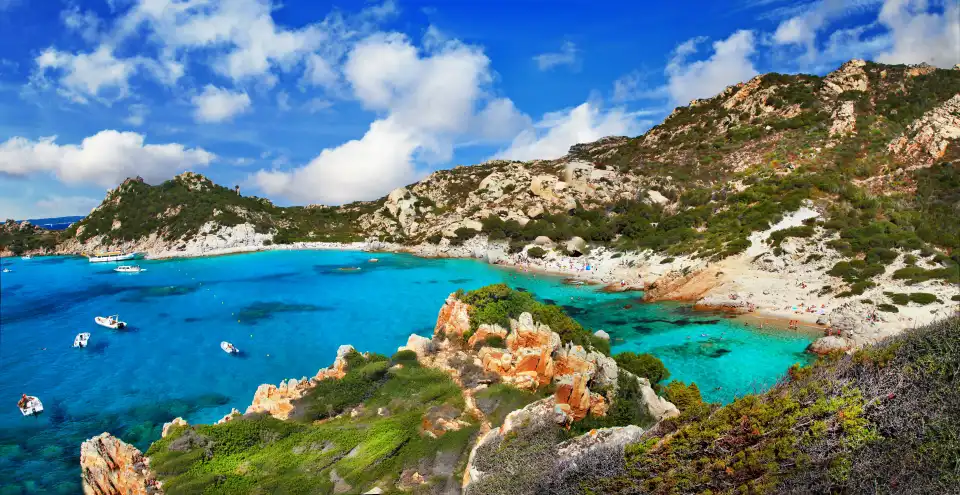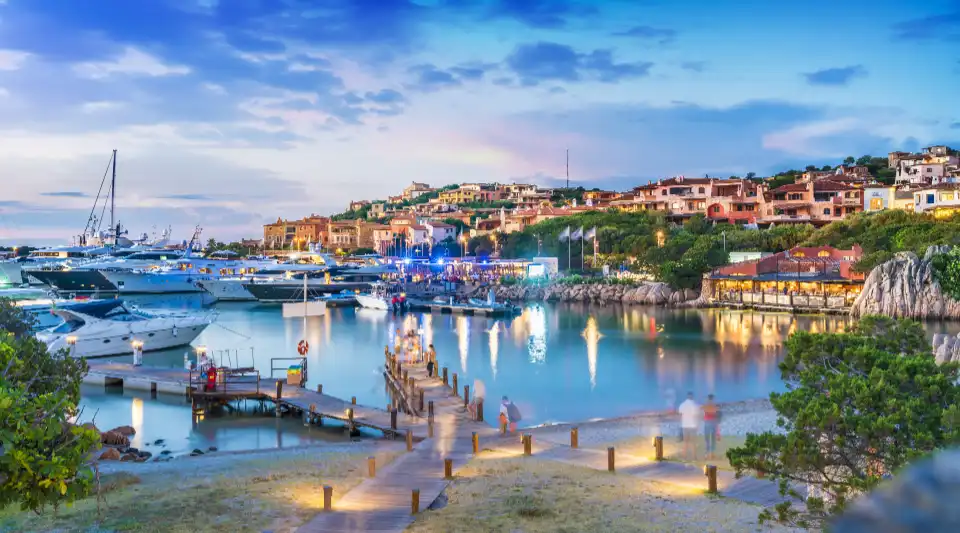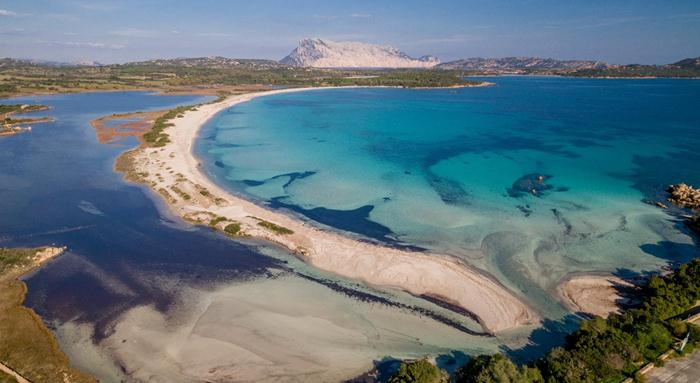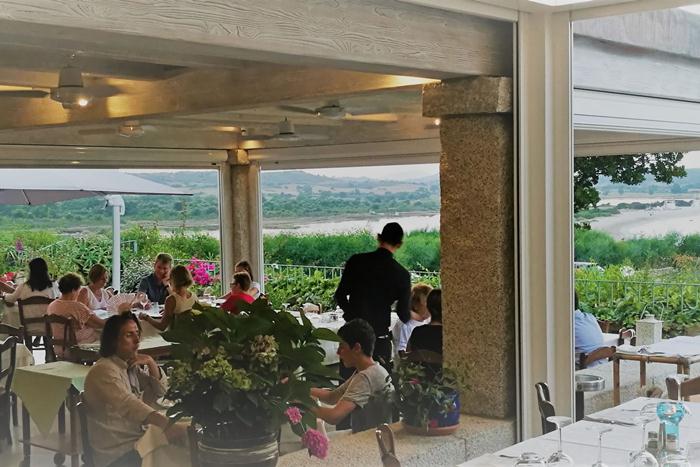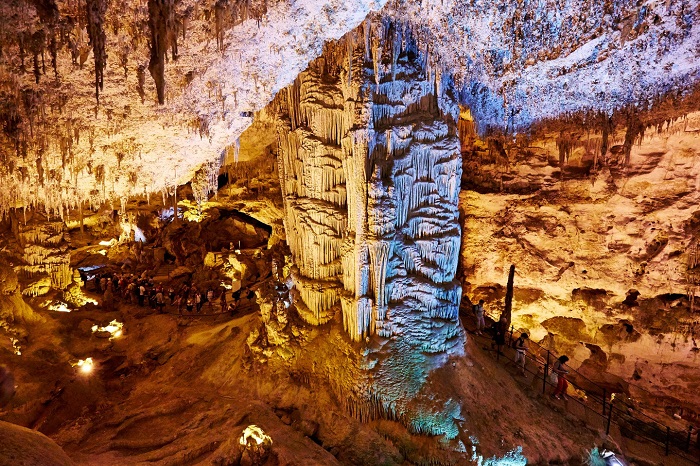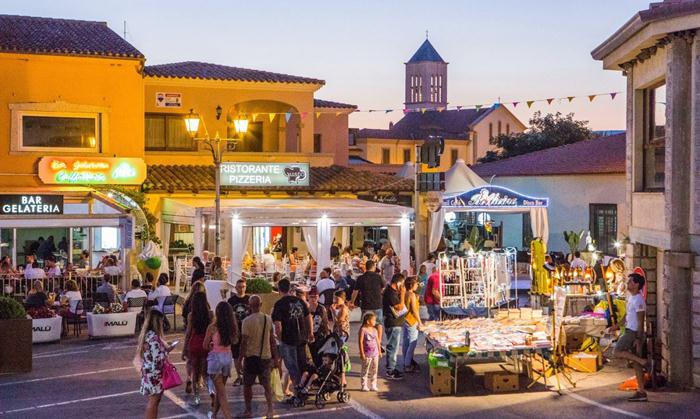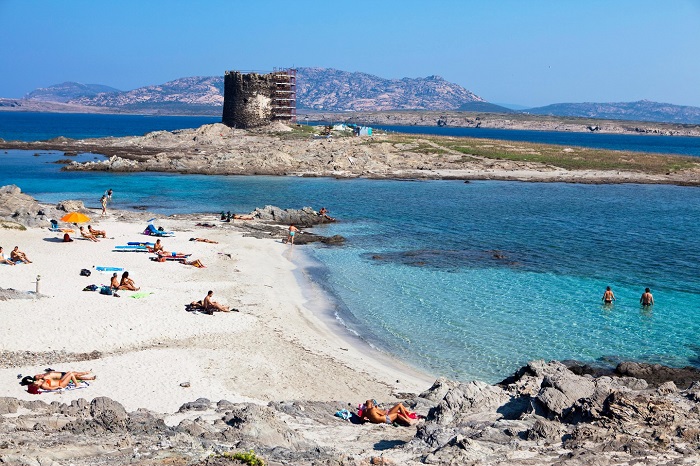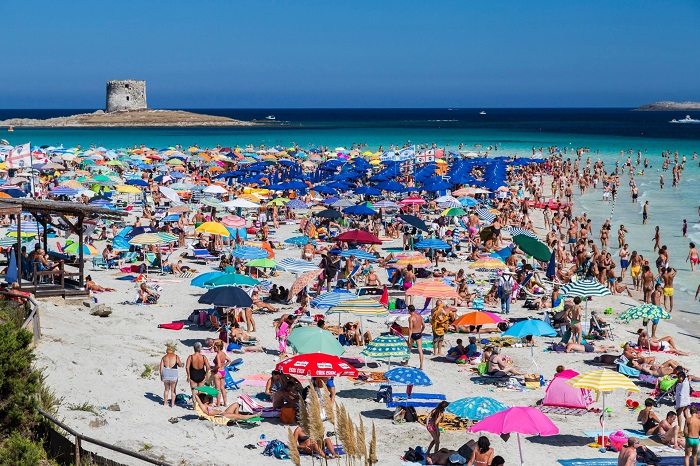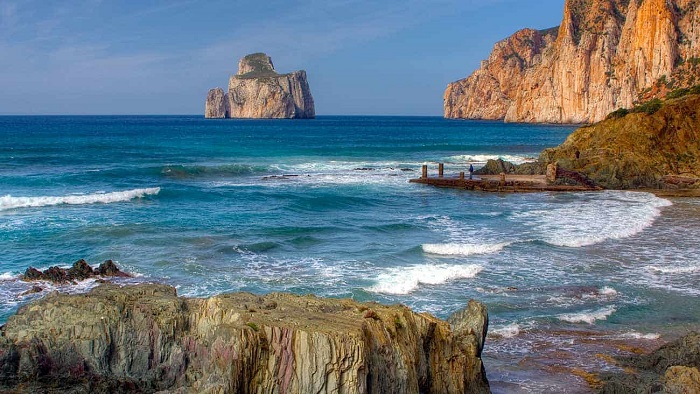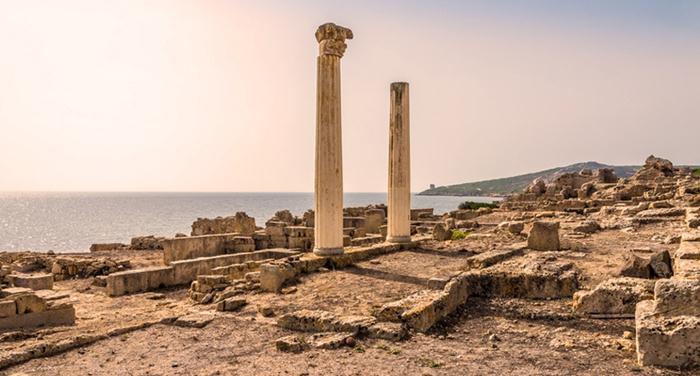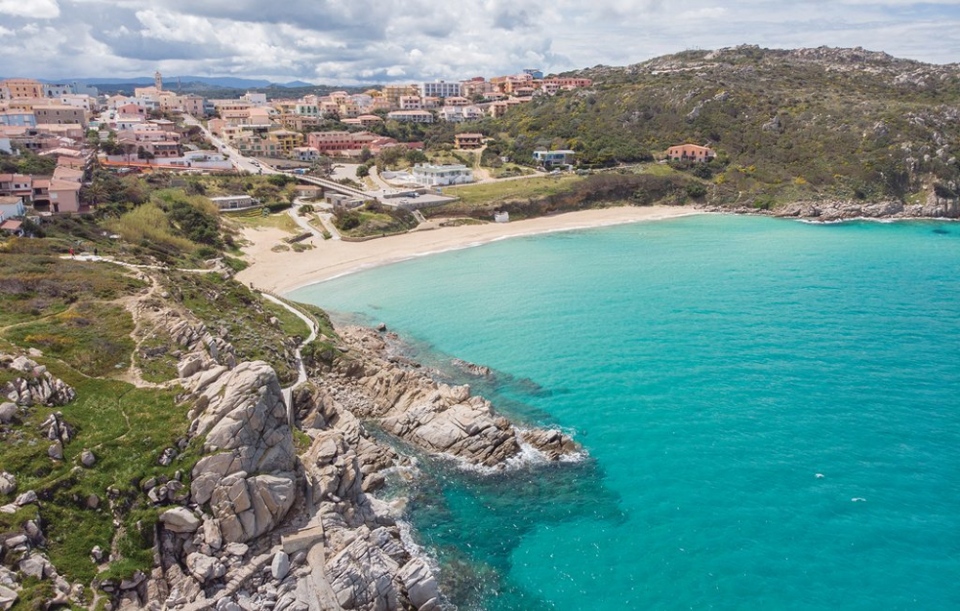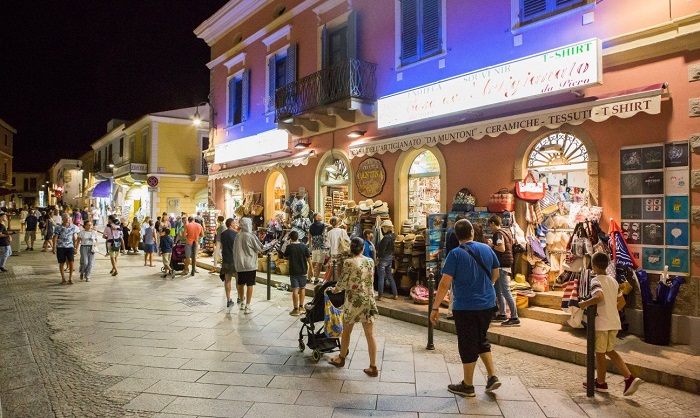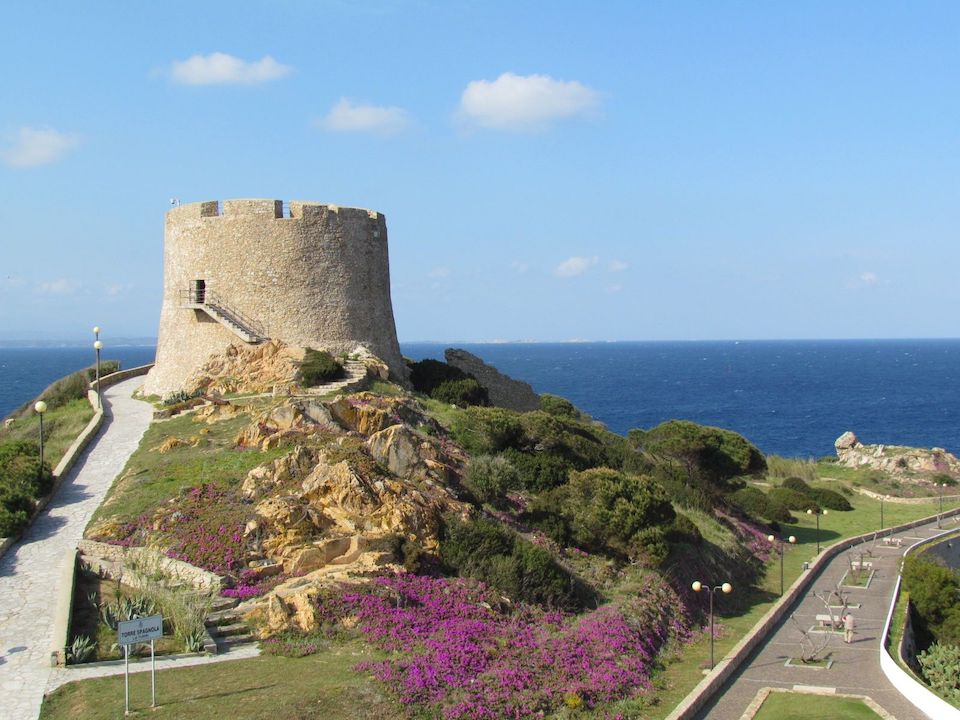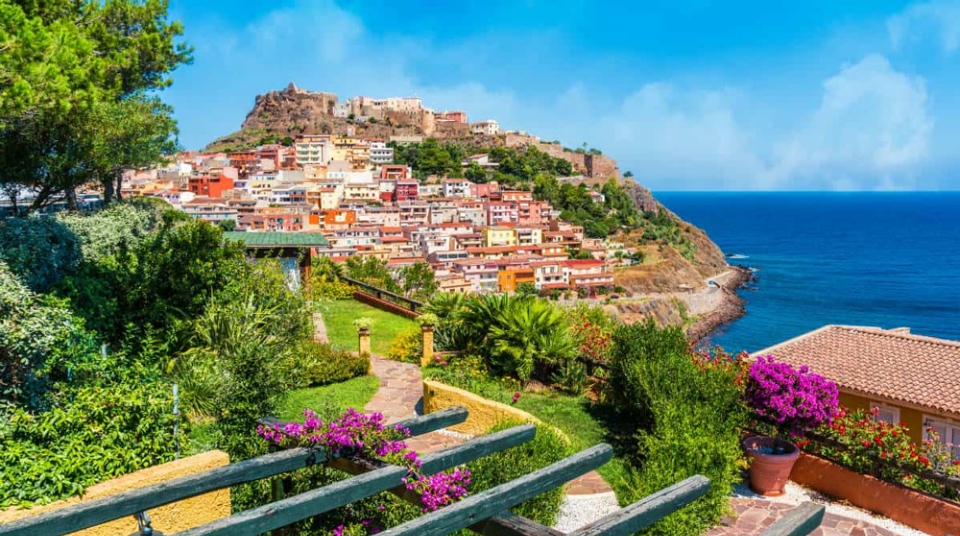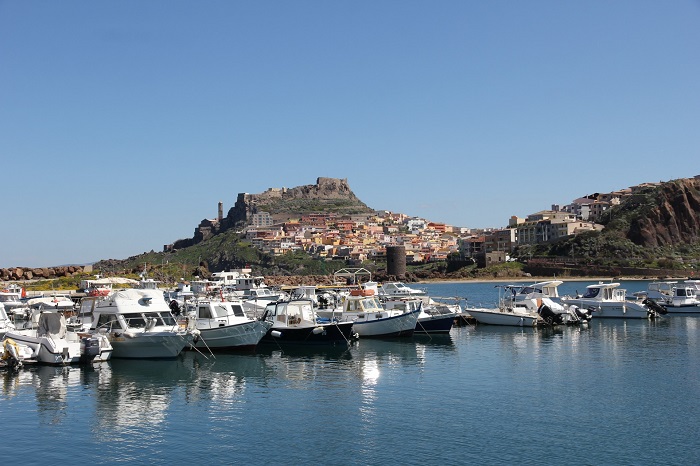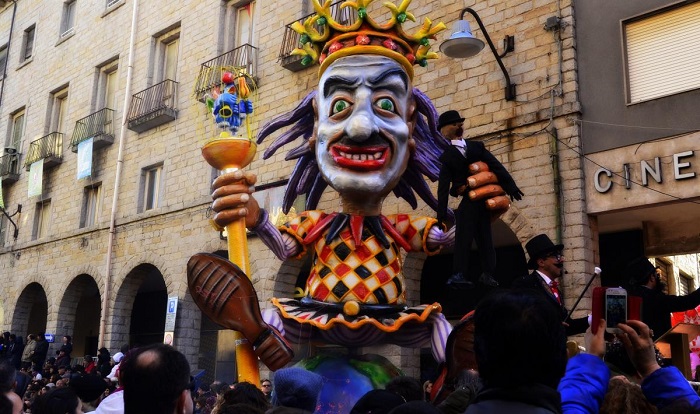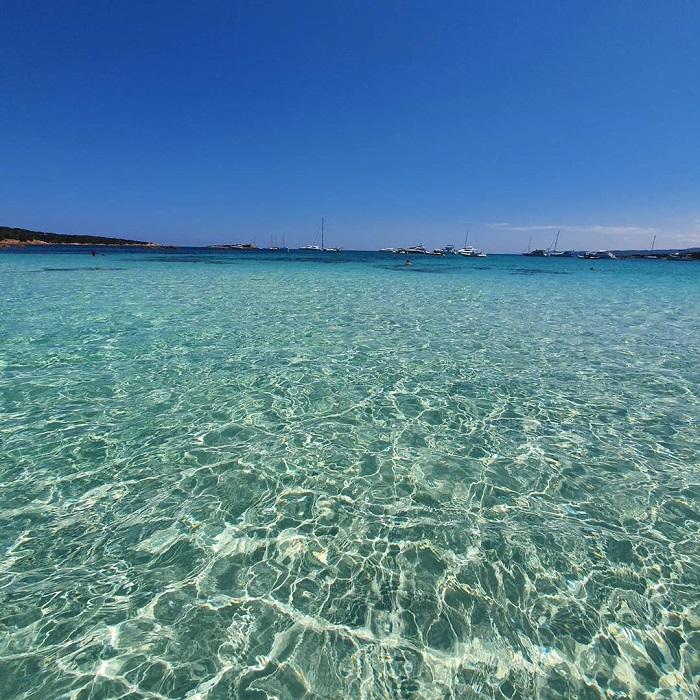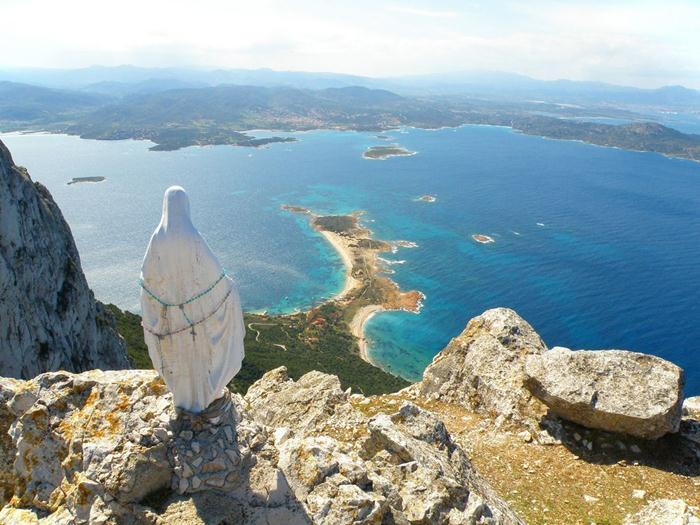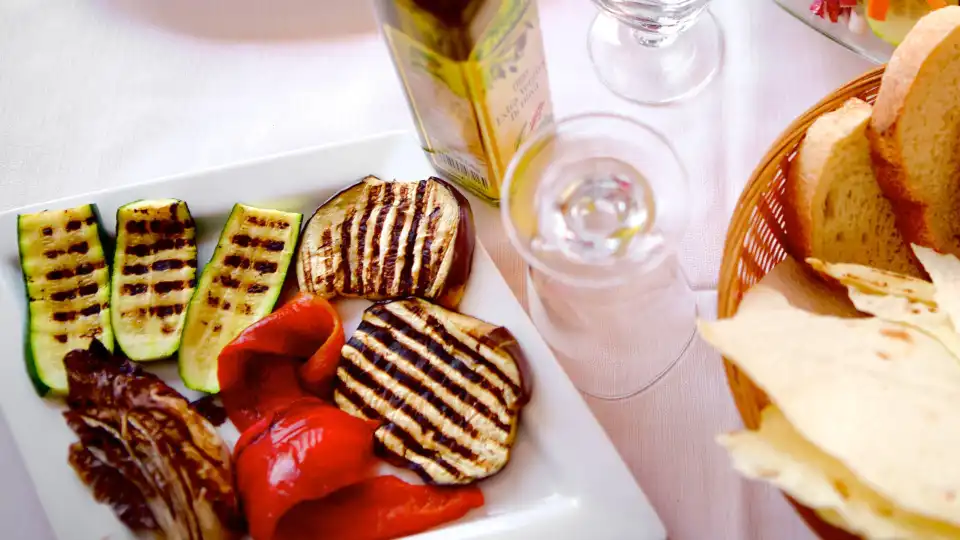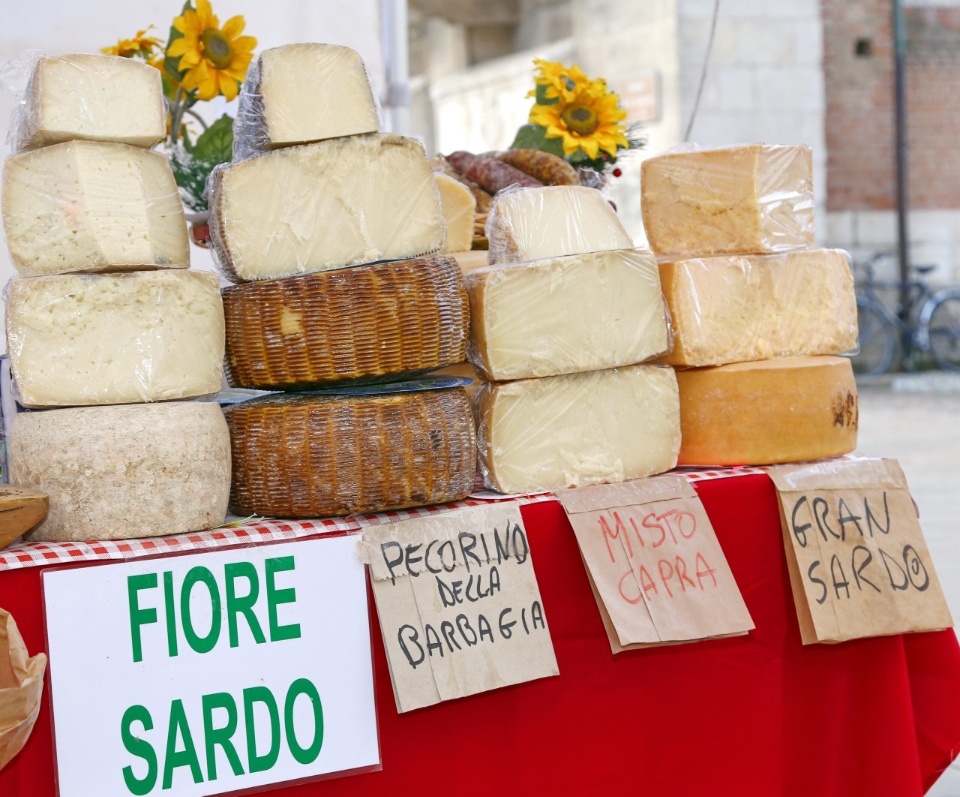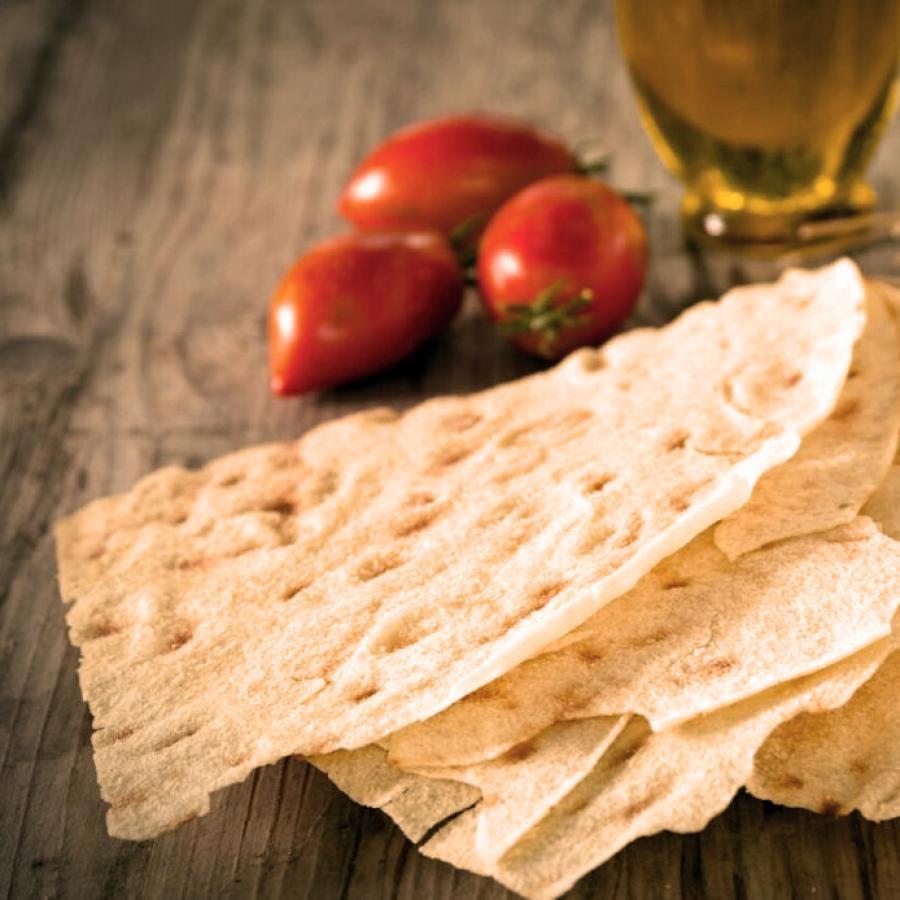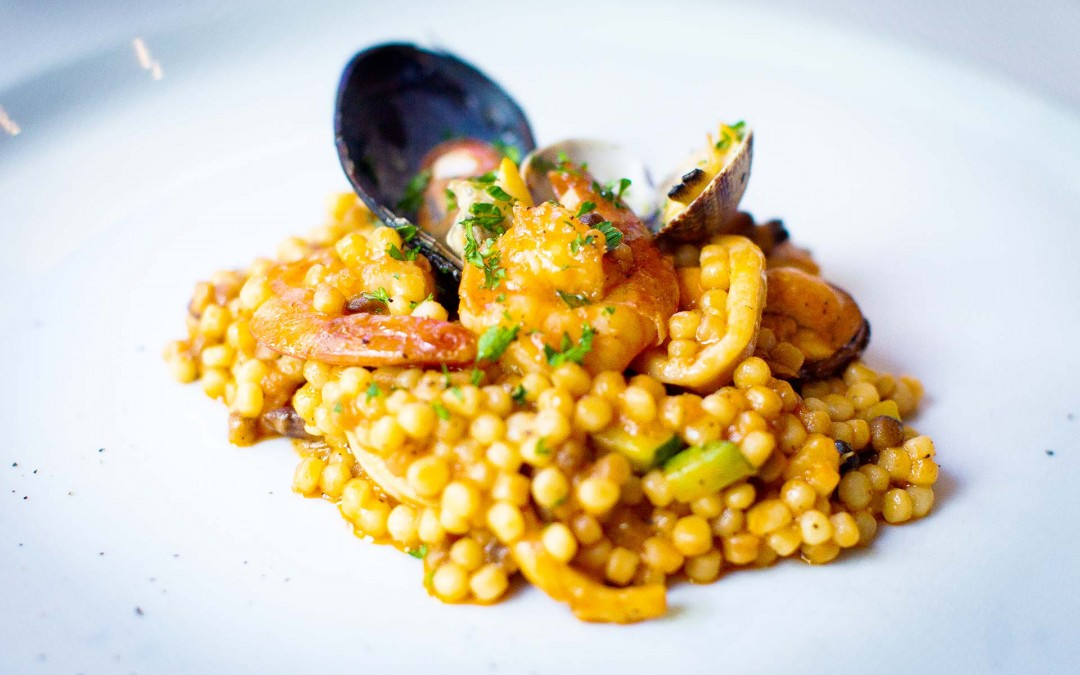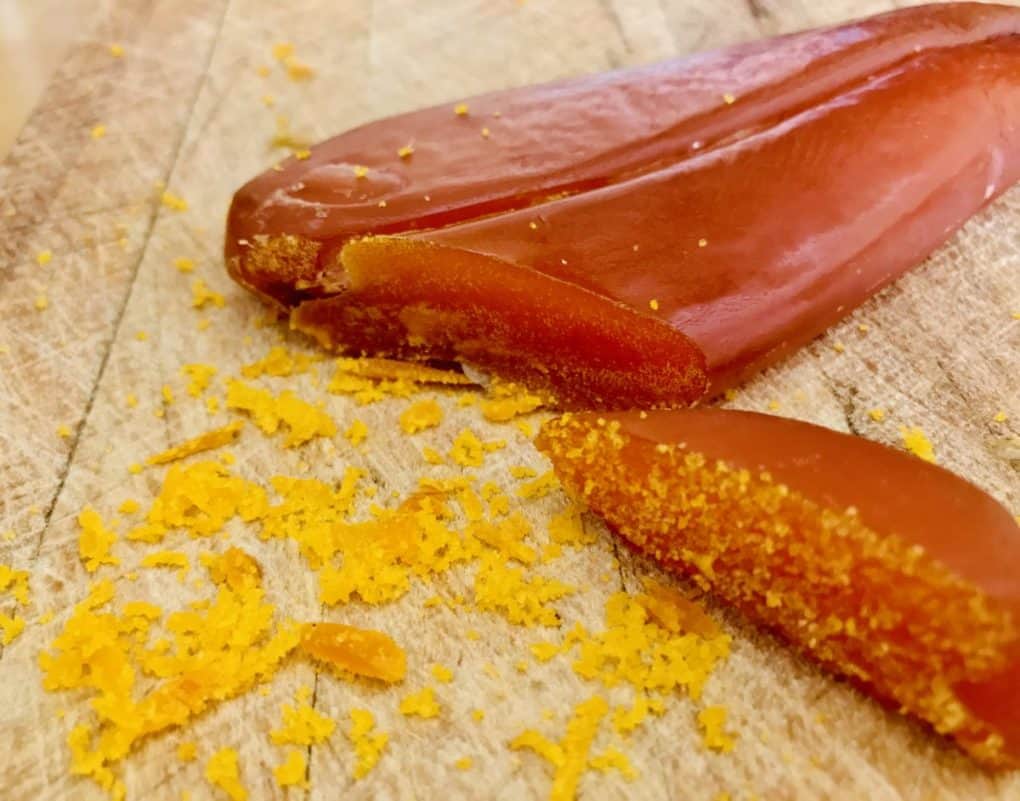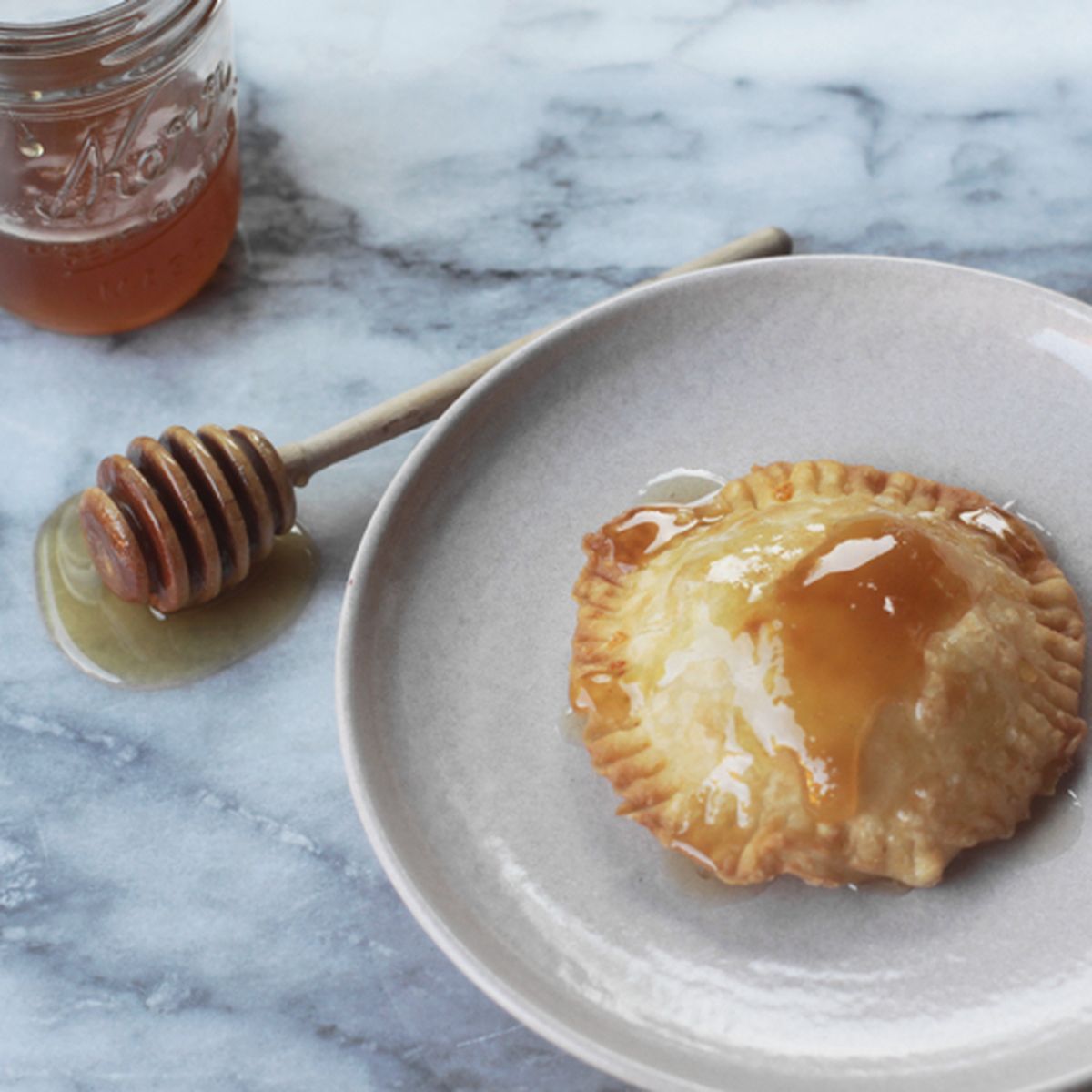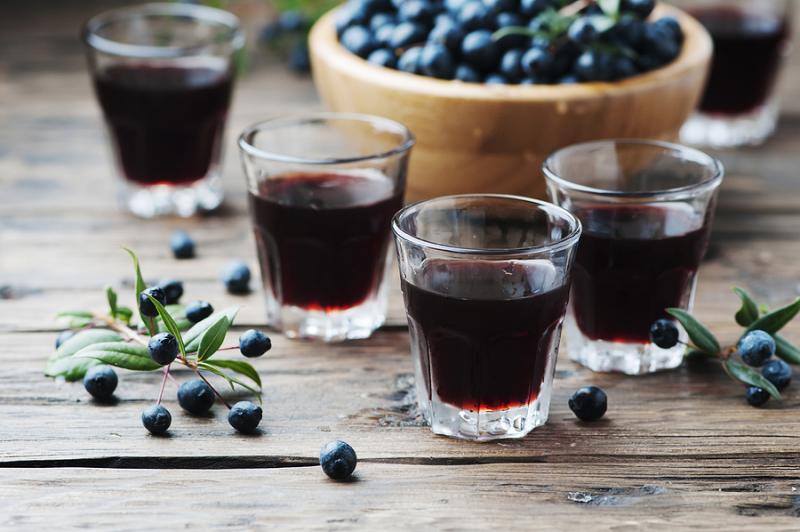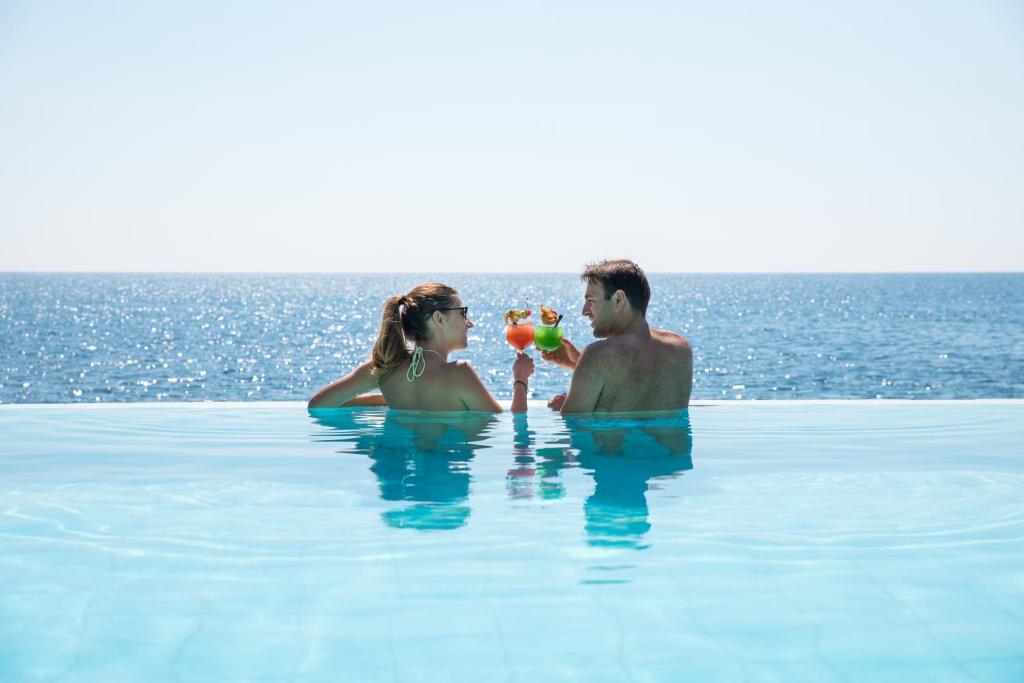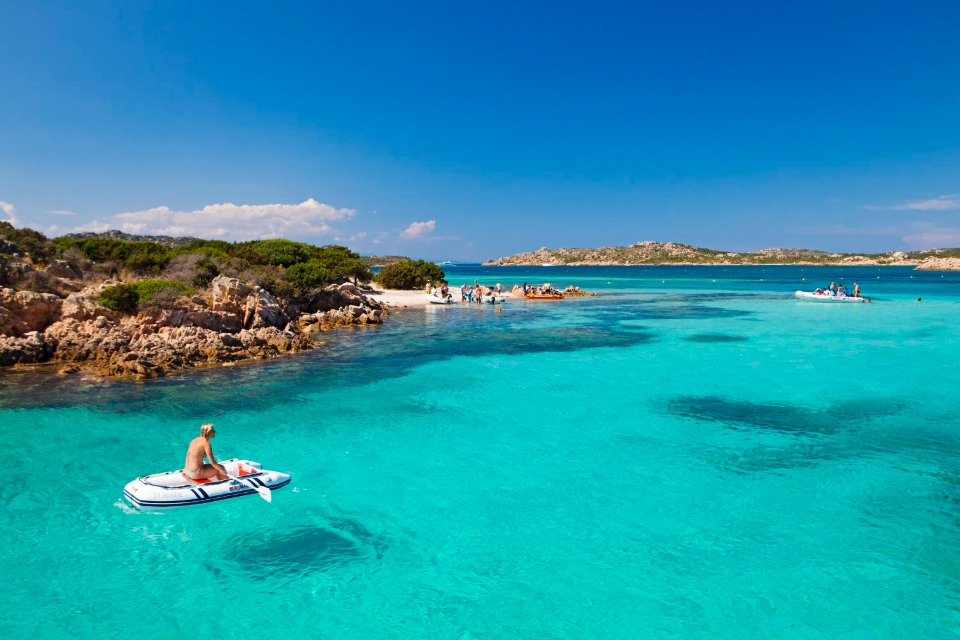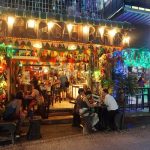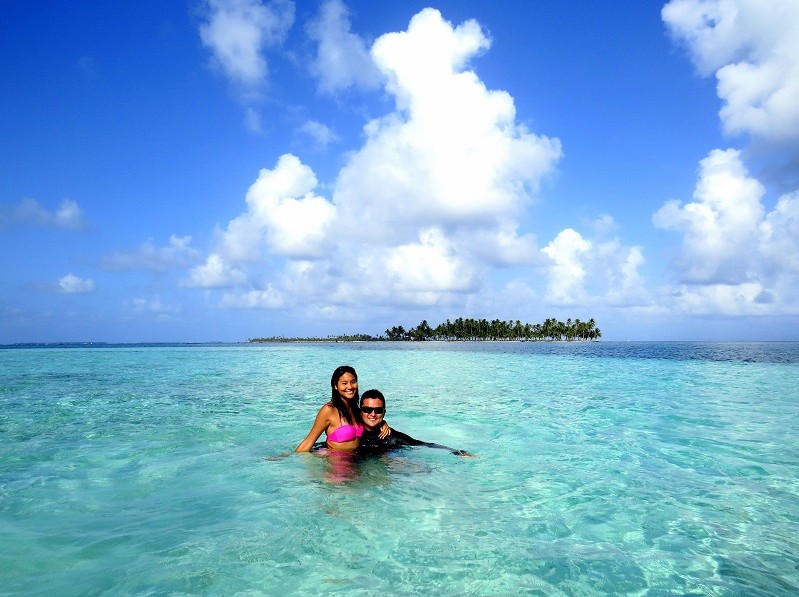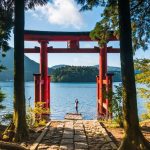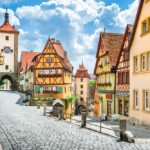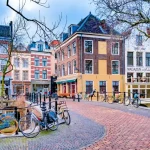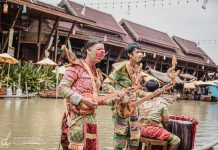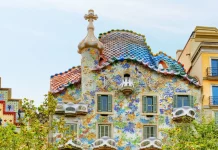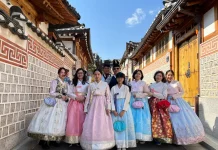The island of Sardinia is not far from the capital Rome and is the second largest island in the Mediterranean after Sicily, but on the island of Sardinia always embraces a landscape and customs that are as different from Italy as if this land has never belongs to Italy. So, is Sardinia worth visiting, how to visit Sardinia, what to do in Sardinia? Let’s check out our Sardinia blog (Sardinia travel blog) with the fullest Sardinia travel guide (Sardinia tourist guide, Sardinia guide) from how to get to Sardinia, best places to visit as well as top things to do in Sardinia to help you maximize your trip as follows!
- A quick guide to Positano — Positano tips & what to do in Positano
- Trapani blog — The Trapani travel guide & what to do in Trapani, Sicily
- Amalfi Coast travel blog — The fullest travel guide & what to do in Amalfi Coast
- Sicily travel guide — The fullest Sicily tourist guide for first-timers
- Cinque Terre travel blog — The fullest Cinque Terre travel guide for a great trip on a budget for the first-timers
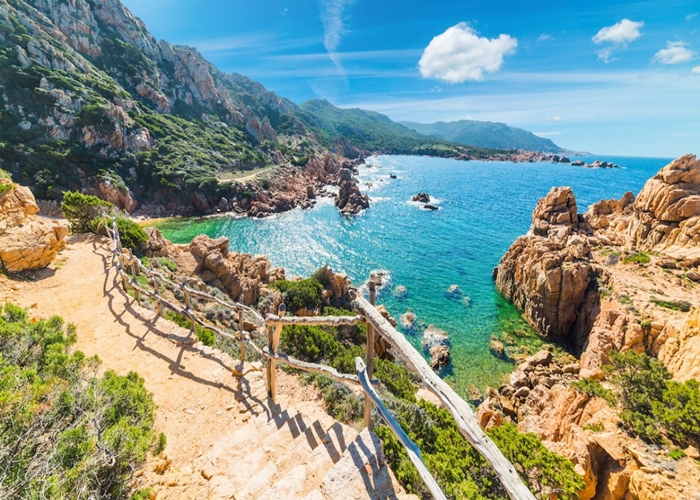
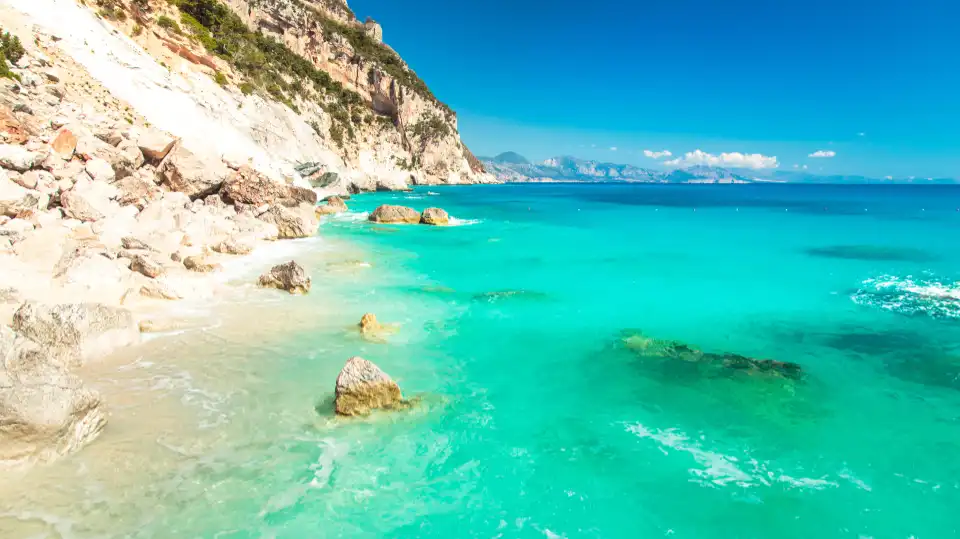
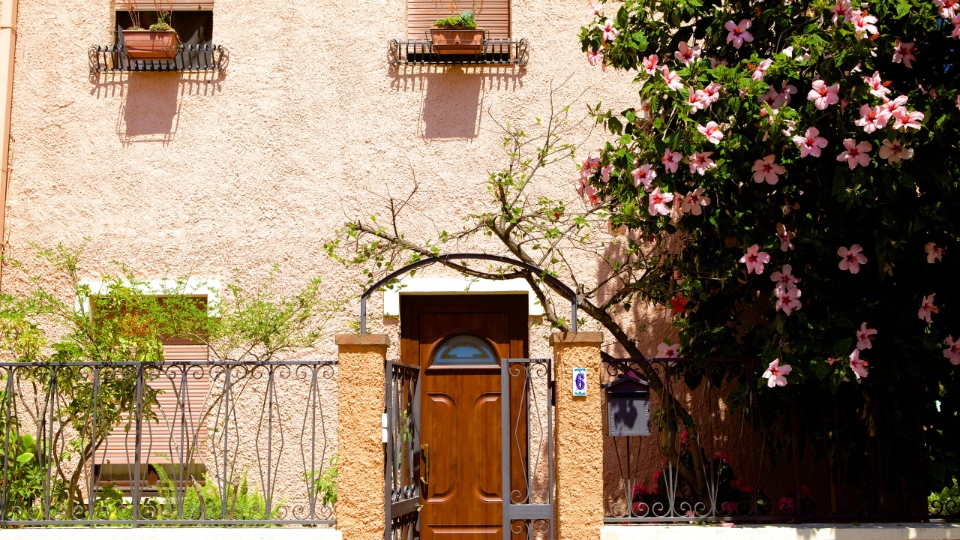
Sardinia fascinates tourists with its beautiful white sand beaches, granite rocks creating countless magical shapes, lush green oak forests, a spacious atmosphere with abundant winds… The friendly, cheerful, hospitable of the local people or the incredibly fresh seafood, delicious ice cream cannot be expressed in words… If you want a vacation with hot sun, golden beaches, fresh air and nature together, you should visit the island of Sardinia.
Overview of Sardina (# sardinia travel blog)
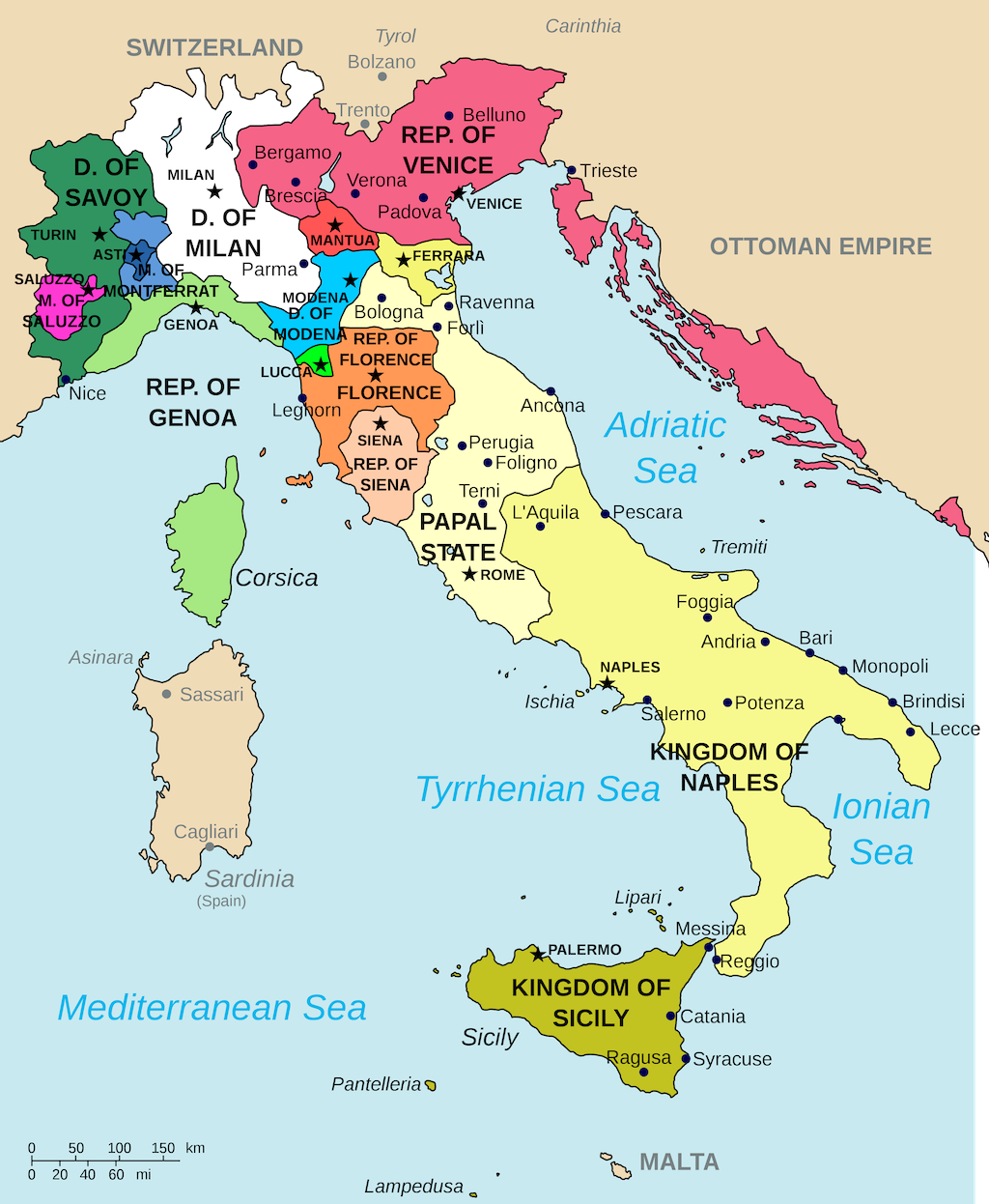
The island of Sardinia has 2,000 km of coastline and more than 1,000 beaches with crystal clear water. If you have an opportunity to come to Sardinia once, you will easily become captivated and want to come back. The island’s name probably originates from the name of the island’s patron saint, Sardus. The sardine species gets its name from this island because of its abundant supply along the seas here.

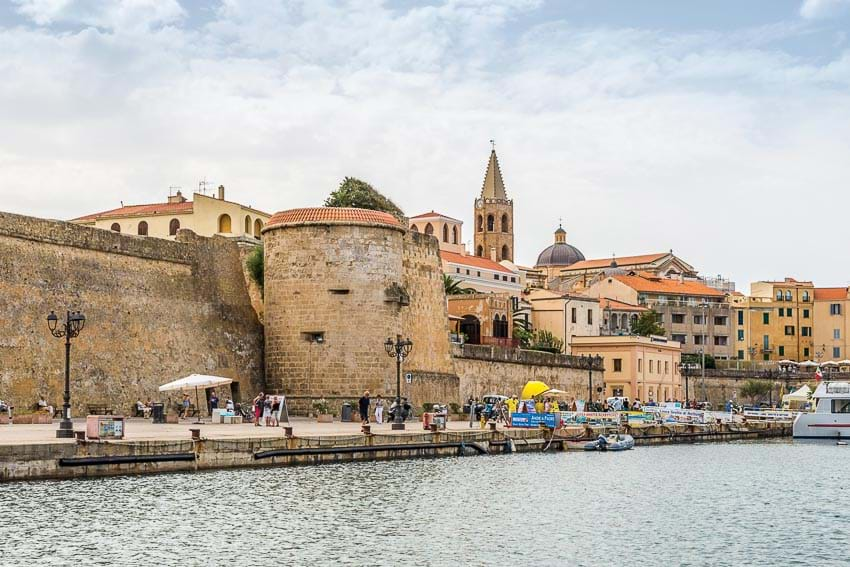
Sardinia (Sardegna in Italian) is a 9,301-square-mile island located in the Mediterranean Sea, just west of mainland Italy, that attracts visitors with its unique blend of ancient culture and stunning coastal views. When you come here, you can not only lie on the white beach and wade out into the clear azure water, but you can also enjoy a pranzo (lunch) complete with Sardinia’s own pasta and wine.
The snorkeling experience among schools of colorful fish in the nearby coves is amazing, you can also explore Sardinia’s traditional inland villages and watch shepherds tend their herds.
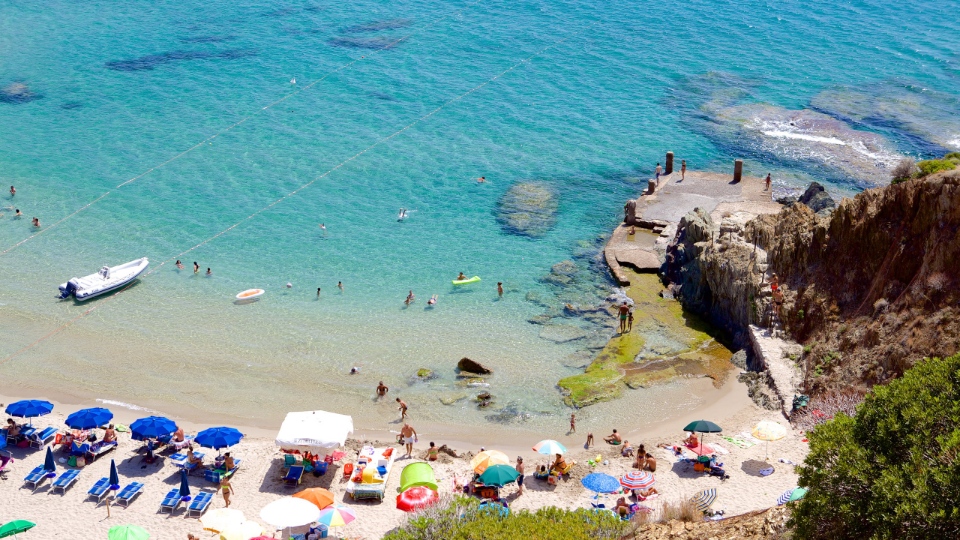
Sardinia is an autonomous region of Italy and one of the largest islands in the Mediterranean. Traveling to Sardinia is extremely safe, in fact the island is one of the safest places to visit in the Kingdom of Italy. Sardinia is an island with many different landscapes. It not only has an extensive coastline, but also mountain ranges and valleys in the island.
Sardinia is one of the most geologically ancient lands in Europe, and as such, there are many historical features to see on the island. There are prehistoric houses known as “Nuraghi” scattered all over the place. There are also the branching islands of Sardinia, which have a mix of historical and modern tourist attractions.
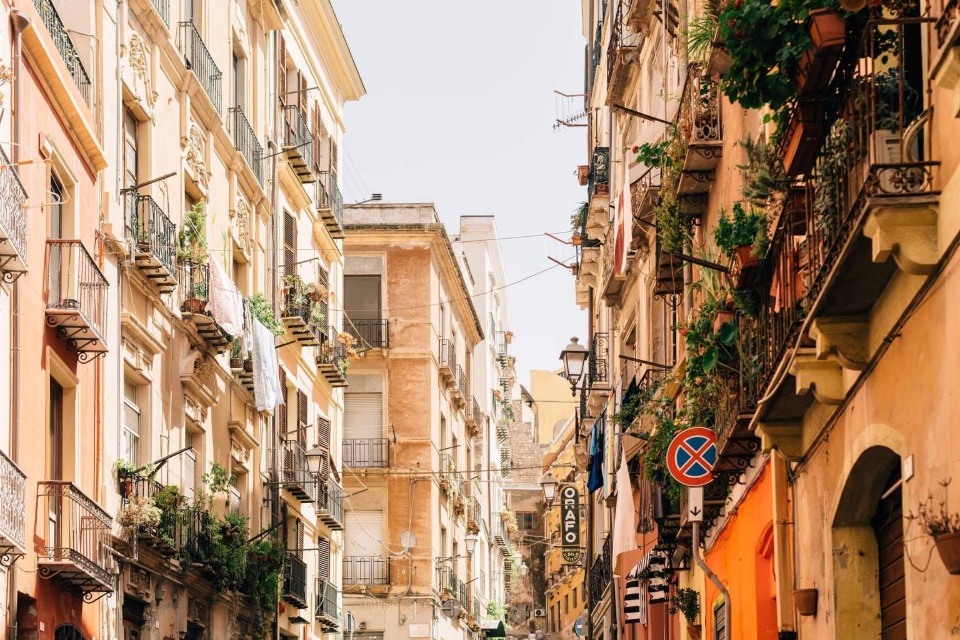
The island of Sardinia is home to more than 1.6 million people based on the latest census, and about 10% of them live in the capital city of Cagliari. Sardinia’s terrain is very diverse with mountains running from north to south in the central part of the island. Valleys and plains make up most of the terrain in the southern region of Sardinia.
Culture and customs (# sardinia travel blog)

The culture in Sardinia is similar to other Italian regions, Sardinians have a deep loyalty to friends and family, they value tradition and good food, they have a laid-back approach to life. Many locals have grown up far from the tourist bustle, in small villages further inland, where traditional values reign and sheep herding is the main industry.
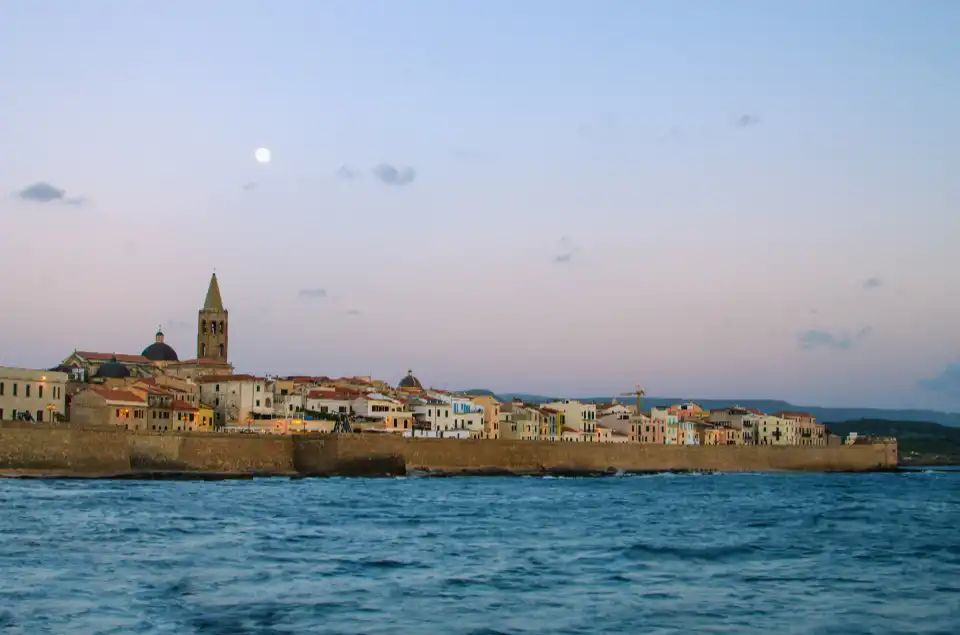
As well as speaking the Sardinian dialect, the locals also speak Italian. People working in the commercial, tourism industries may also speak some English, but it is helpful if tourists know a few basic phrases, such as “hello – buongiorno/buonasera”, “goodbye – cameerci”.
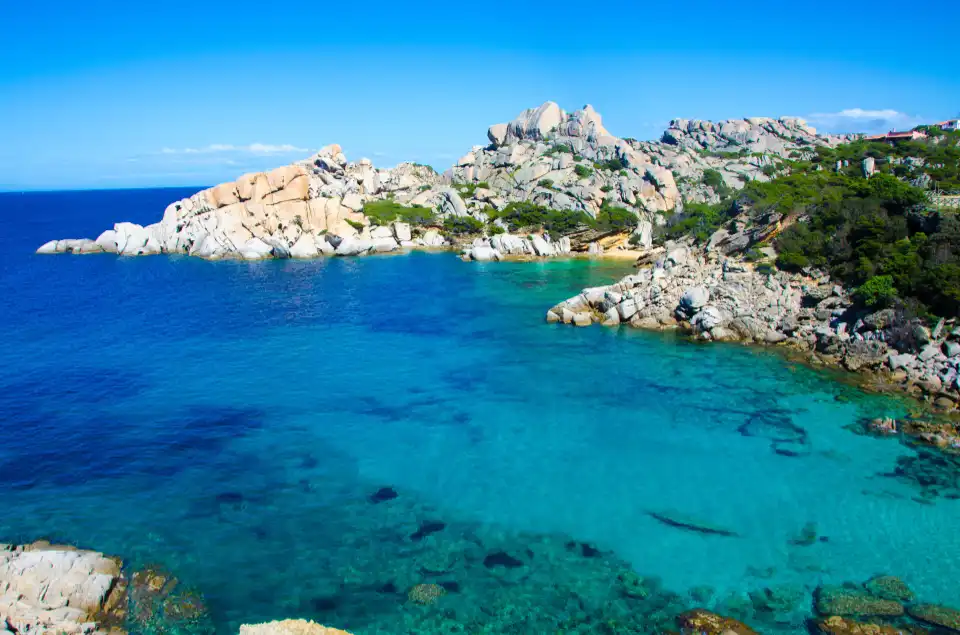
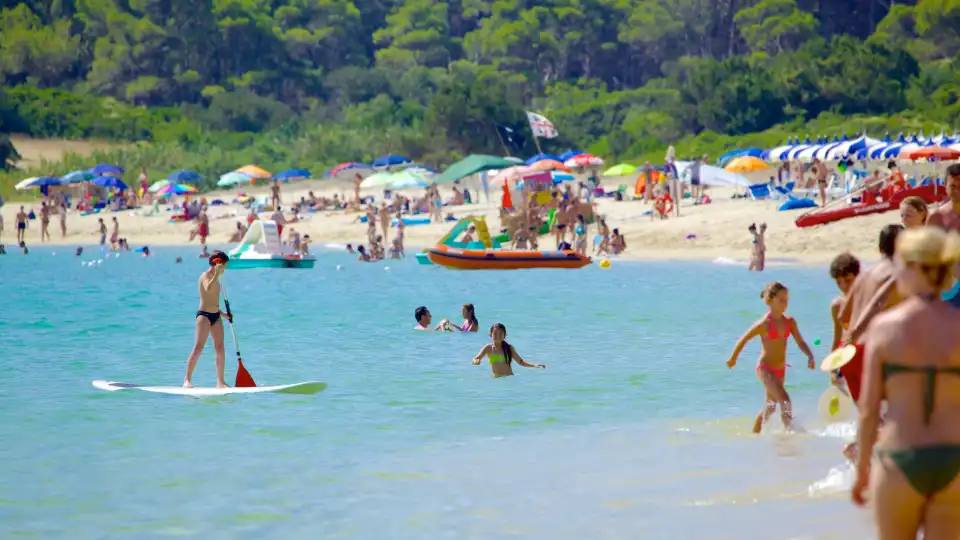
When to visit? (# sardinia blog)
The Sardinia climate is similar to most other Mediterranean destinations, with mild winters and hot summers.
The best time to visit Sardinia island is from April to June when the flowers are in full bloom, the sea water is warm and the temperature has not reached its highest level in July and August. However, summer in Sardinia has equally fascinating experiences such as the Tyrrhenian Sea (east of the island) and the incredibly fresh Mediterranean waters at this time of year and a series of vibrant festivals and events. During summer, temperatures rise above 30 degrees Celsius with no rain. Over the past few years, summer temperatures have reached levels above 33 degrees Celsius.
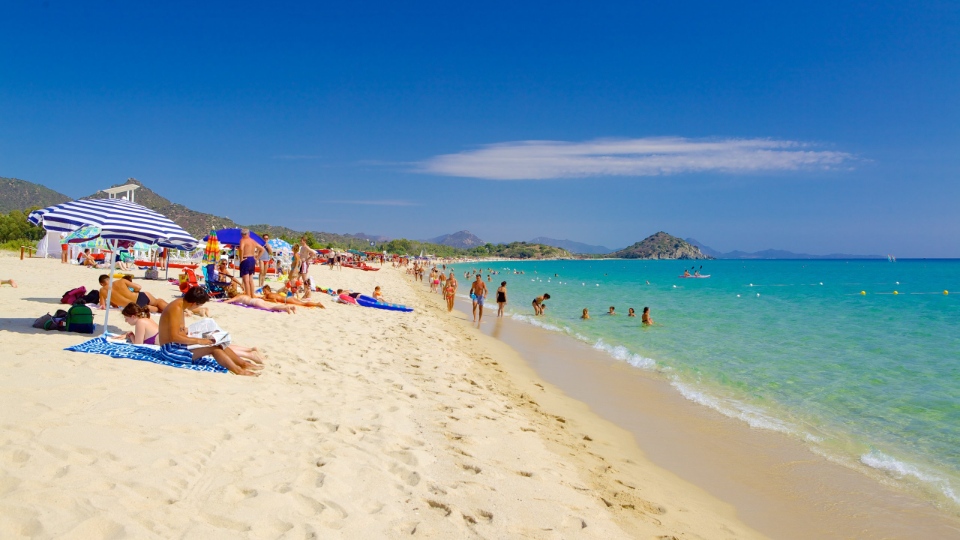
September and October have milder weather and fewer crowds, while the months between November and March are low season with cold temperatures and fewer tourists.
June and September are also good times to visit Sardinia with temperatures ranging 20 – 26 degrees Celsius with little rainfall.
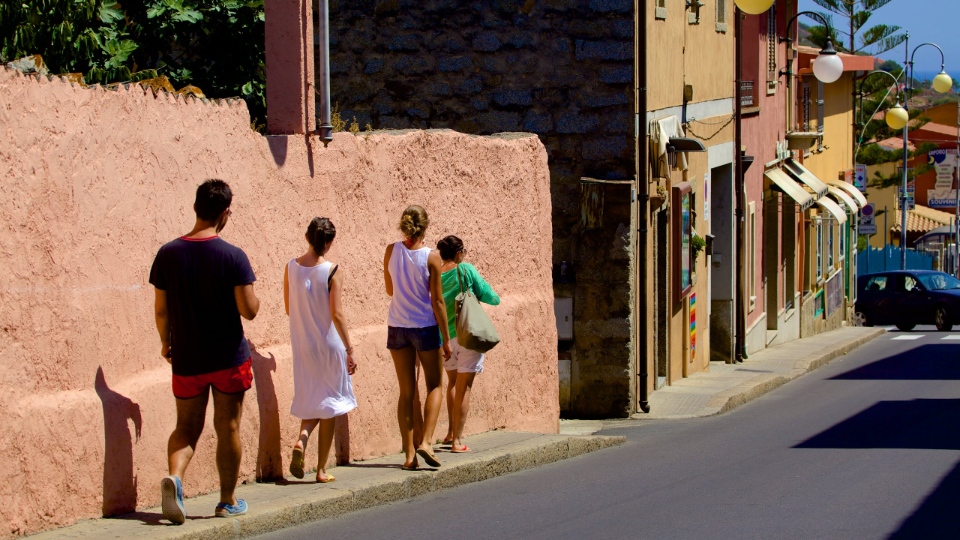
August (or the first 2 weeks of August) is when most Italians take their summer vacation, so May, June or September, early October is the best months to explore Sardinia to avoid crowds, if you don’t want to be crowded during your trip to Italy. If you want to go to places with less tourists, you should take a boat to small islands and beaches that can only be reached by boat.
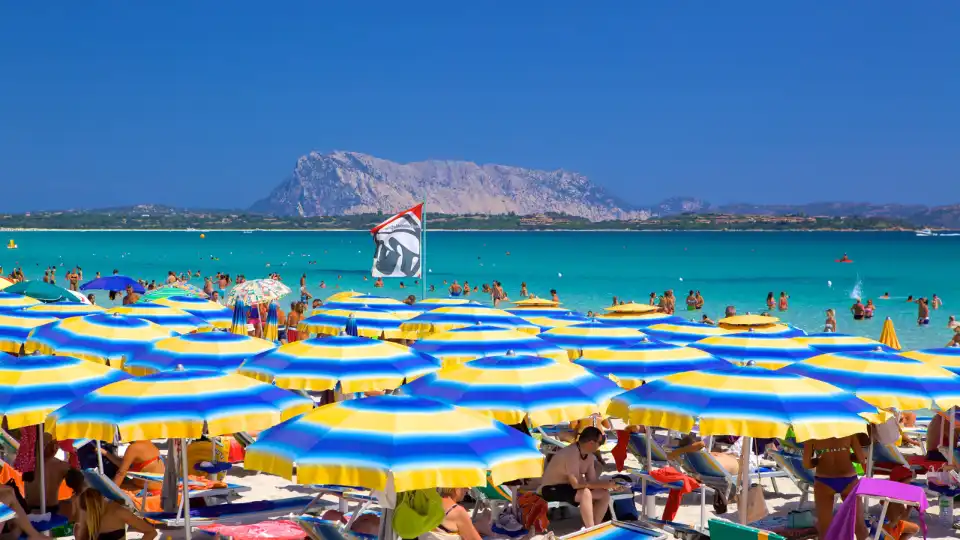
The capital city of Cagliari is a year-round destination and the perfect place to relax in Sardinia with its deserted beaches. Many beach resorts and towns close during the winter months, reopening around Easter.
Getting to Sardinia (# sardinia travel guide)
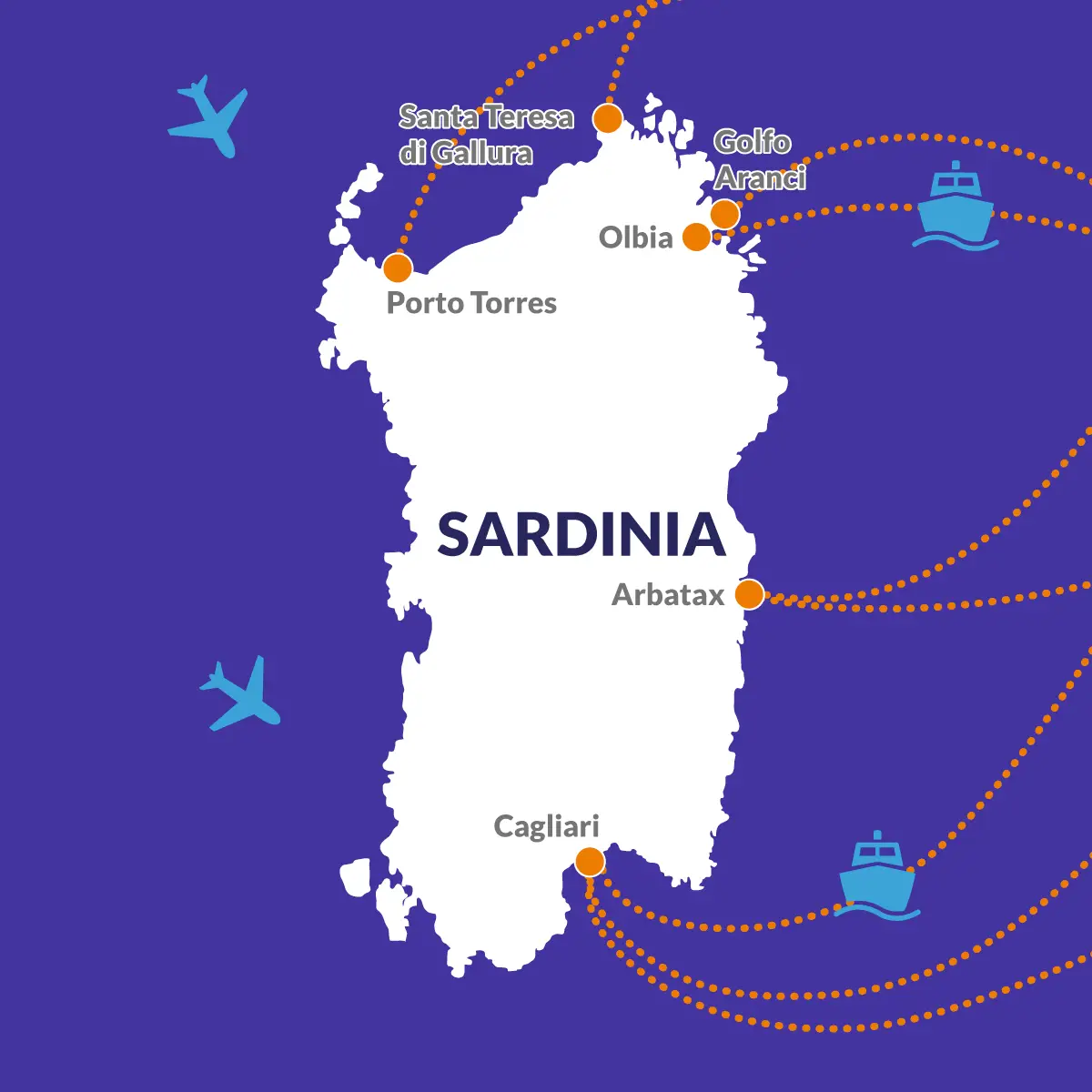
By air
Cagliari International Airport Elmas (CAG) has a terminal for both international and domestic flights, 7 km from the center of Cagliari, public transport is very convenient. You should walk to the station to catch the train every 6 minutes and it takes 7 minutes to get to the center with very cheap fares. Taking the bus is expensive and requires a long wait. If you are traveling in a large group with lots of luggage, you can take a taxi for about 17 euros during the day and 20 euros at night. Anyone who wants to stay in the south of the island should book a ticket to this airport.
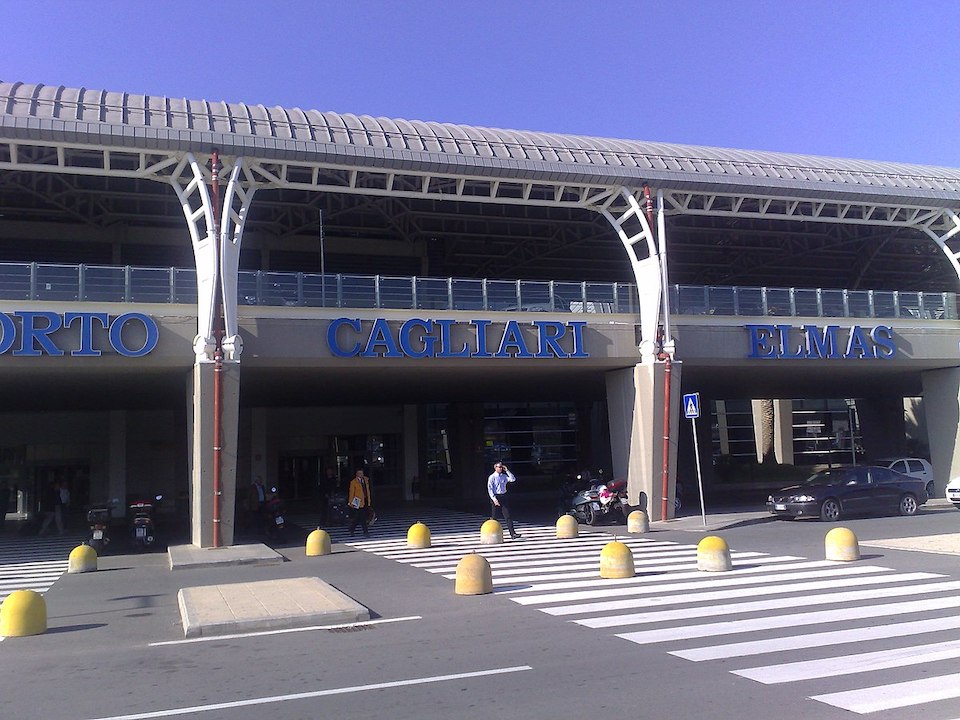
Olbia Costa Smeralda Airport (OLB) is an airport located in the north of the island if you want to rest and visit places such as Porto Cervo, Porto Rafael, San Teodoro, Costa Smeralda… this airport has a few designer shops and bookstore. The airport is about 4 km from the center of Olbia, there are two bus routes number 2 and number 20 during the day every 20 minutes and every 40 minutes after 8pm. Taking a taxi costs about 15 euros.

Riviera del Corallo International Airport (Alghero Airport, AHO) is the smallest airport in Sardinia with 15 check-in counters along with 6 boarding gates and is located in the center of the island if you want to stay in the center of the island or the northwest coast island, you should book a ticket to this airport. The airport serves both low-cost airlines and is a major hub for RyanAir. The airport is 11 km from the city, so it takes you 15 minutes to drive along highway SS91 or SP 44, take the bus for about 30 minutes and take a taxi for about 20 euros to get to the center.
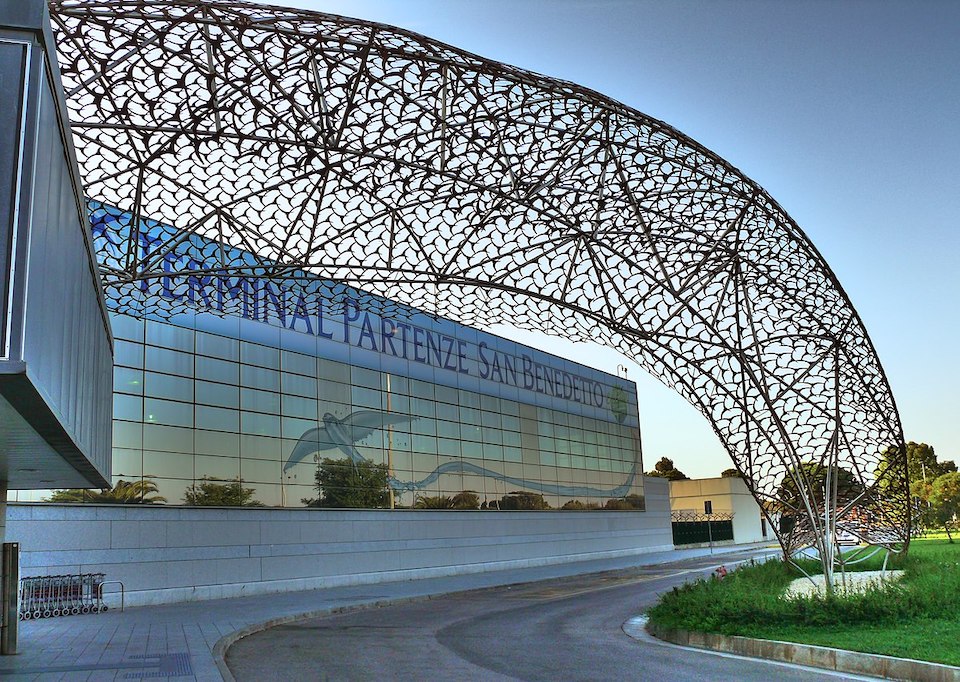
By sea
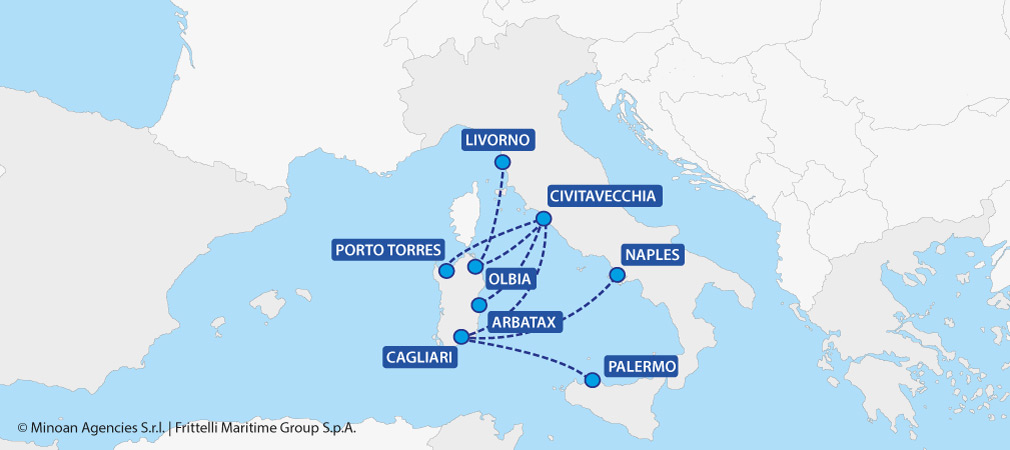
If you depart in Europe, you can go by car and then take a ferry across the island. If you’re afraid to drive or come from another continent, you can fly to Olbia and rent a car/motorbike to drive yourself or book a tour with peace of mind. Rent a self-driving car for a minimum price of 20€/day.
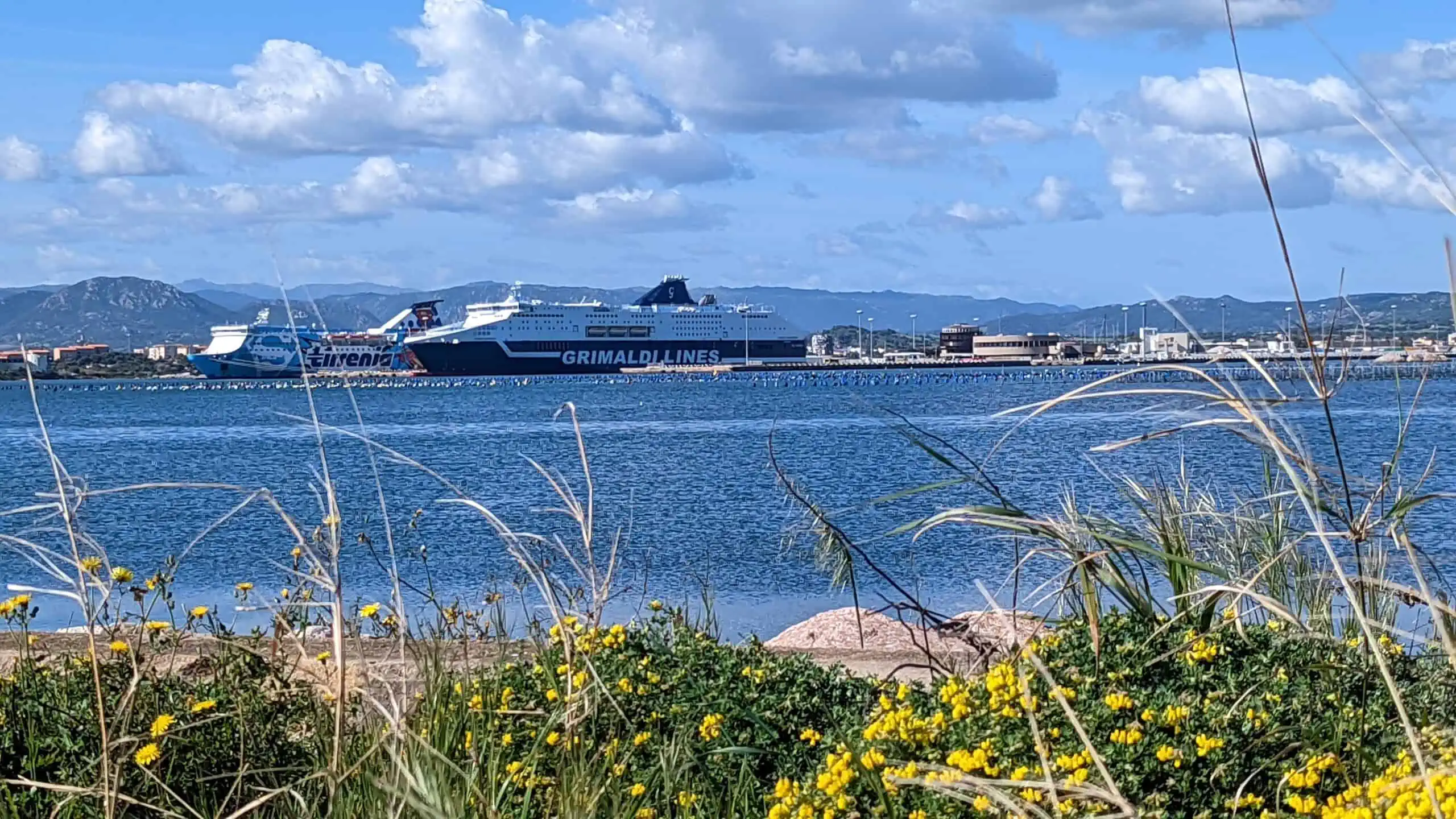
Getting around the island (# sardinia guide)
The means of transportation here is not reasonable. We will not find much transportation at the seaside and other beautiful places. I think I should take a car and explore the island. Drivers will be free to travel and convenient for exploring mountains, ancient relics and close-by beaches. Here everything is very beautiful.
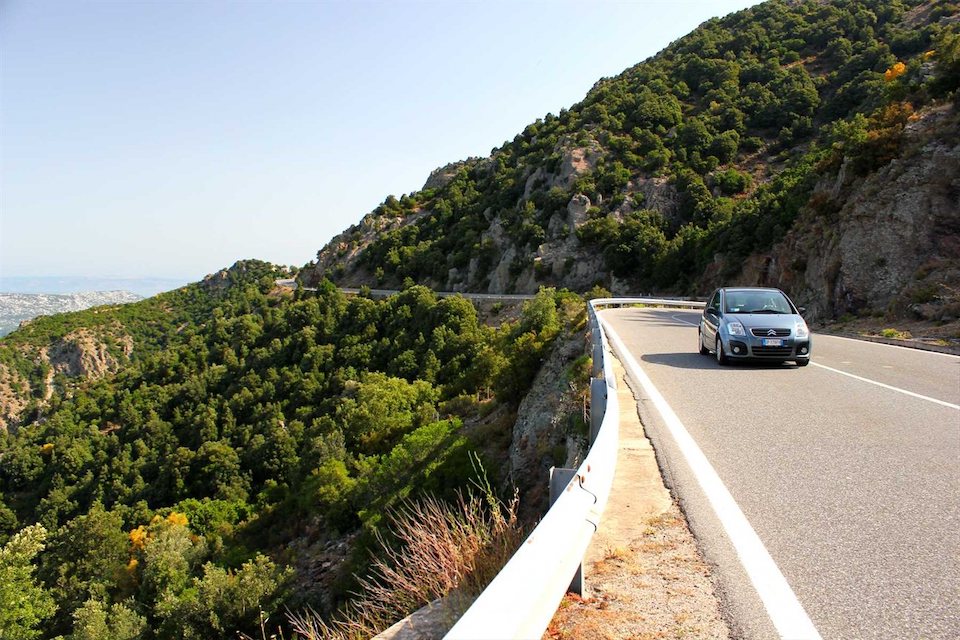
Those who bring their cars or motorbikes to the island travel by large ferry to main ports such as Olbia, Porto Torres or Santa Teresa di Gallura. The fare for the vehicle is up to hundreds of euros depending on the route, but everyone is still happy to pay to enjoy the pleasure of traveling on the island amid the wind, sunshine, and clean air.
Where to visit in Sardinia?
This place is one of the most geologically ancient lands in Europe, so when coming here, visitors will discover many interesting things about history. With a rich history and stunning natural beauty, Sardinia offers a wide range of attractions and activities to explore.
Cagliari
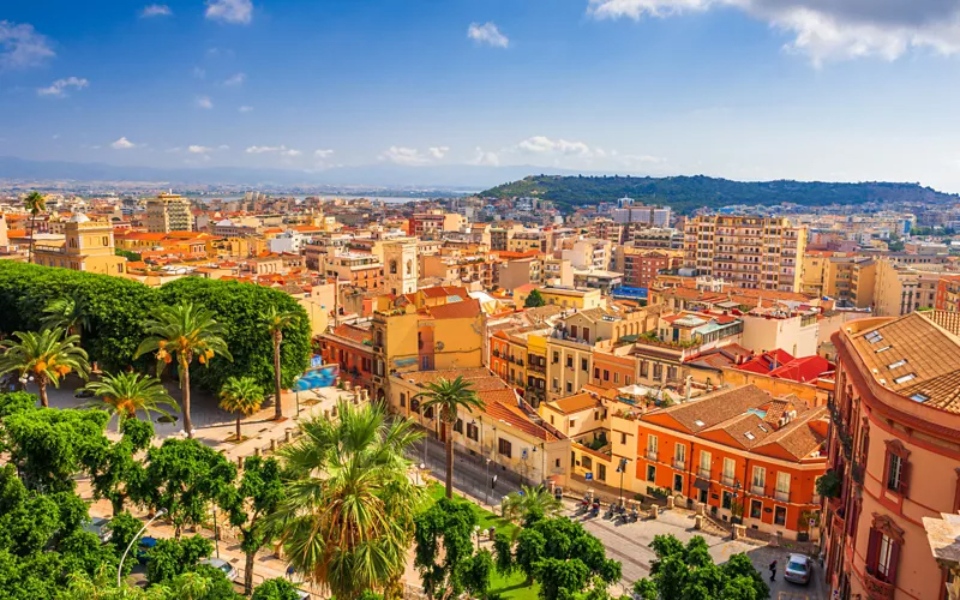
As the capital of Sardinia, the historic city is over a thousand years old and has very well preserved the architectural works over periods. Cagliari’s appeal is mainly its unique sights. South of the city are beaches with clear water and white sand as smooth as snow. Alghero beach is famous for its unique red coral and the Grotta di Nettuno cave.
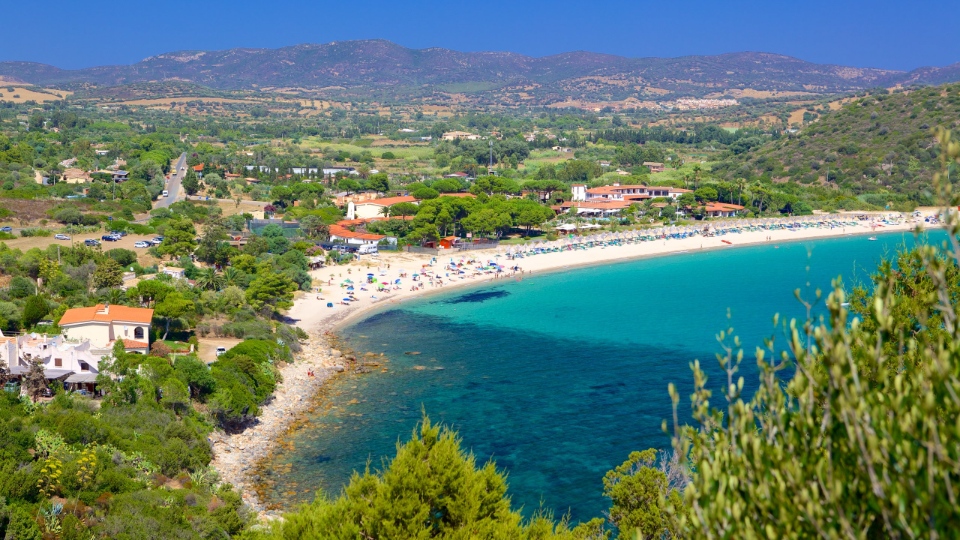
If you like walking or hiking, explore the lead-zinc Iglesias mine, which is up to 8,000 years old. Besides exploring history, you can admire the countryside landscape with ancient villages, green farms, some sections are only rugged rocky hills, some sections pass through spectacularly cut bays…
Lu Impostu beach (# sardinia travel guide)
The island of Sardinia has many beautiful pristine beaches. Lu Impostu is a spectacular cove located along the northeast coast, about 20 minutes south of Olbia. Visitors need to cross a small lagoon to reach the beach but the experience is truly worth it.
According to locals, visitors should book a table to enjoy lunch at Ristorante Lu Impostu, to enjoy panoramic views of the turquoise sea and surrounding wild hills. Salt-grilled fish combined with vegetables, salad served with toast and a little rosemary and a glass of refreshing Vermentino white wine is a perfect suggestion here.
Neptune’s Grotto
Take the seaside climbing stairs or “goat stairs” and you will reach to this incredible natural wonder. The cave takes its name from Neptune, the Roman god of the sea. Inside, you’ll find a large saltwater lake, stalactites and stalagmites creating an otherworldly experience.
If you don’t fancy climbing down and up some 656 steps, you can take a boat from the harbor in Alghero and spend the night at this little farmhouse a short drive from the cave, in a peaceful corner of Alghero is surrounded by farmland and vineyards. Perfect for couples, this 1-bedroom cottage features a spacious terrace equipped with loungers and hammocks for relaxing evenings.
San Teodoro
A 10-minute drive south of Lu Impostu Bay is San Teodoro, a beautiful small town with blue beaches and romantic stretches of white sand. Here is also very bustling and sparkling with the night market held from June to September.

A place not to miss when visiting San Teodoro is L’Artista restaurant, which serves excellent mixed dishes with fresh shellfish. The town also has a variety of campsites that are worth checking out.
La Pelosa Beach
Although it’s not the most beautiful beach in the island of Sardinia, La Pelosa beach in Stintino is definitely a great beach to visit. This beach is flanked by turquoise waters and sugar-white sand on one side, with lush Mediterranean vegetation and on the other, views of the island of Asinara and a charming 17th-century tower. If you fancy spending a night right on the beach, book a room at Villa Lilium. This charming three-bedroom home can comfortably accommodate five guests and is perfect for families with children and groups of friends.
If you want to enter the beautiful beach (La Pelosa), you must book in advance on the website (3.5€/adult, children free).
Pan Di Zucchero Island (# sardinia blog)
A very small island off the coast of Iglesias is an extremely beautiful natural island. Pan Di Zucchero can be reached by renting a small boat.
Costa Smeralda
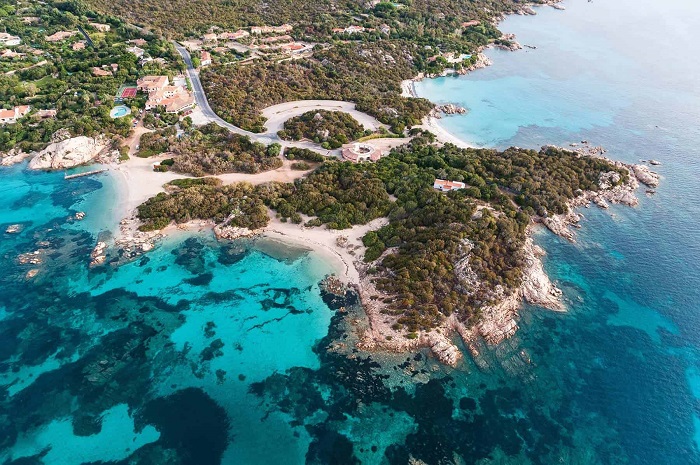
If you like to enjoy the hot sun and Mediterranean waters, you should visit Costa Smeralda. Costa Smeralda is like an island resort with villas, boutique hotels, marina, shopping areas and of course extremely vibrant nightlife. Costa Smeralda is located in the northeast of the island of Sardinia.
Ozieri

Next, visitors can visit the picturesque town of Ozieri, about 45 minutes inland from Olbia. Ozieri is an ancient town with a long history and is also one of the wealthiest areas in the island paradise of Sardinia. This place is famous for its charming arches and colorful flower windows.
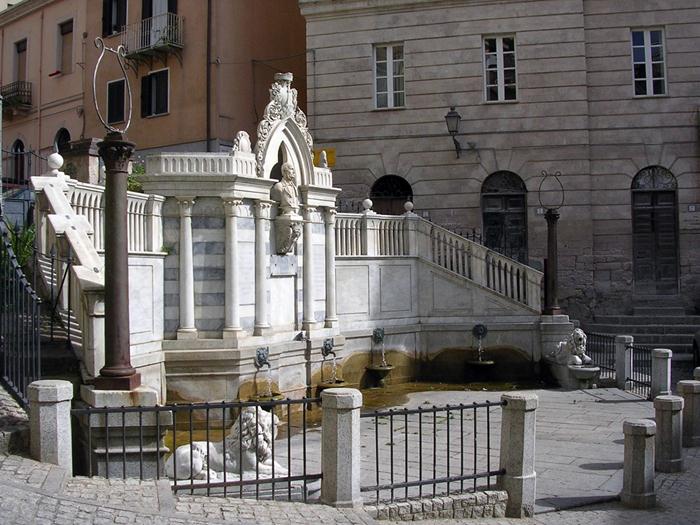
Ozieri is an ancient town with a long history and is also one of the wealthiest areas on the island of Sardinia. This place is famous for its charming arches and colorful flower windows. Palazzo Vigliaroni boasts one of the most beautiful buildings in town with stunning frescoes and doors, a testament to the elegant lifestyles of historically wealthy families.
Su Nuraxi di Barumini
A Sardinia historical attractions to visit are the mysterious and ancient structures known as Nuraghe that are scattered throughout Sardinia. Su Nuraxi is part of the Barumini archaeological site and is considered by experts to be one of the best examples of civilized Bronze Age villages. The site has been listed as a Unesco World Heritage Site. Adjacent to this area are also museum and cultural center.
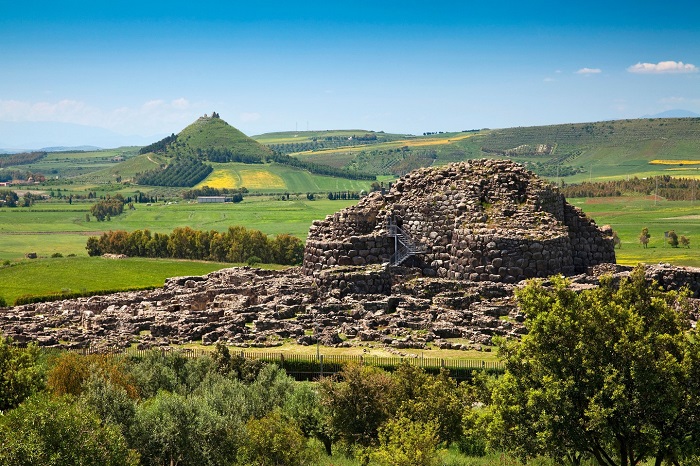
With a 4,000-year-old history, the site is recognized by UNESCO as a world heritage site. From afar, the Barumini citadel catches everyone’s eye with its majestic towers, somewhat dilapidated, making it look even more mysterious. The oldest part of Barumini is a central tower made of large stone blocks with three floors, 18.6 meters high, built between the 17th and 13th centuries BC.
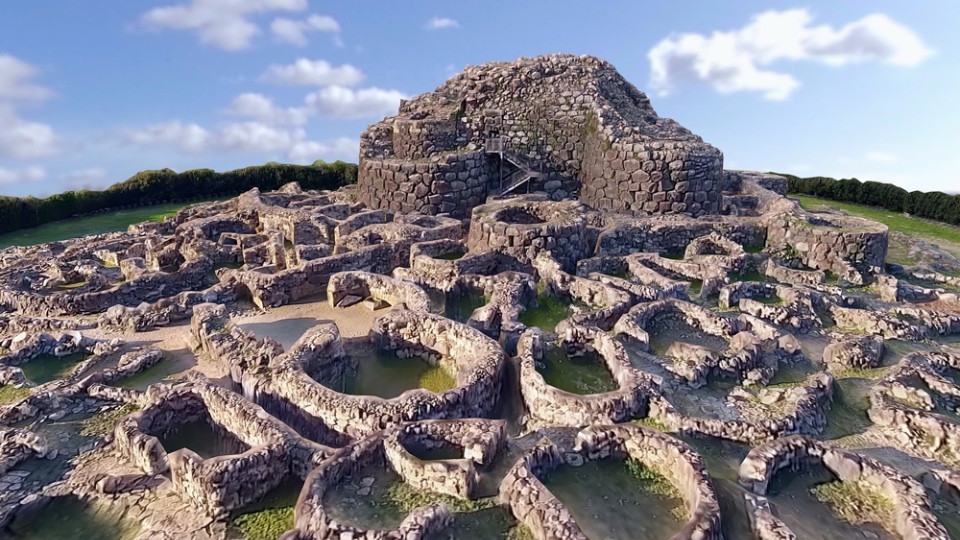
A village was built around the tower dating back to the Bronze Age. Each house is built on flat terrain with a circular structure made of large-scale stone, a roof made of wood and tree branches.
Tharros
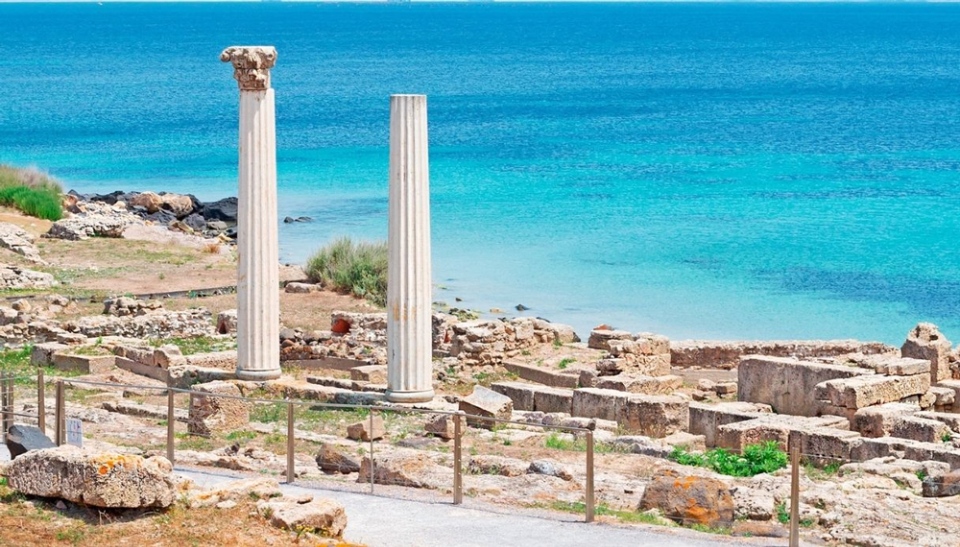
Tharros is an ancient city on the west coast of Sardinia. If you love history, Tharros has plenty of monuments for you to explore. You will see the ruins of the ancient Roman empire. Near the archaeological site you can visit the civic museum of “Giovanni Marongiu di Cabras” – which collects antiquities from Sinis and the Spanish Tower of S. John.
The city was founded by the Phoenicians in the late 8th century or possibly the early 7th century BC. Tharros is also famous for its fresh seafood and beautiful beaches for visitors to enjoy.
Gola di Gorropu Canyon
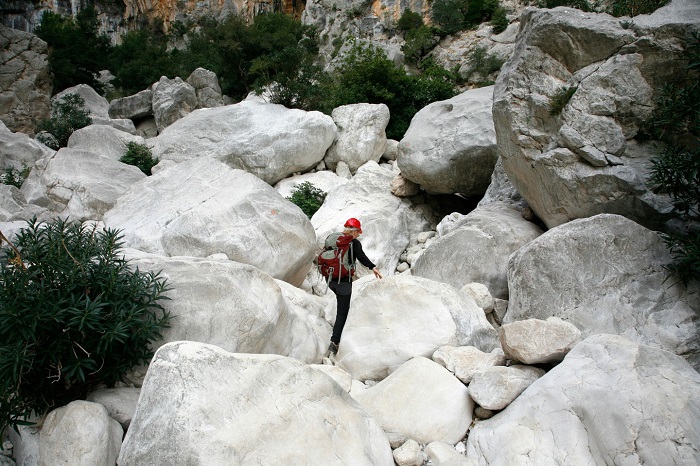
Located in a vast chasm on Mount Supramonte, Gola di Gorropu is often called the Grand Canyon of Italy. Nearly 457m deep and 2km wide, it offers trails for hiking and rivers for rafting and swimming. Sardinia’s most spectacular canyon is surrounded by limestone walls up to 500m high. The endemic (and endangered) Aquilegia nuragica plant grows here, and in quieter times you can spot mouflons and golden eagles.
Capo Testa
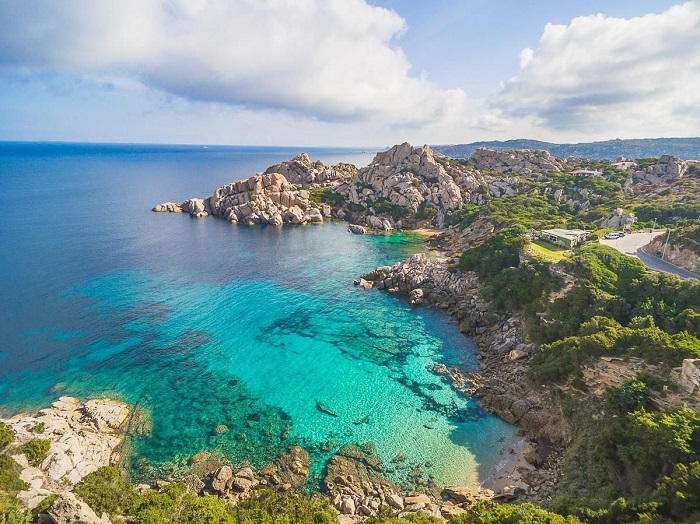
At Capo Testa in northern Sardinia, the wind has sculpted granite boulders into soft shapes, and the water is deep and clear. At nearby Cala dei Corsari, the water is actually so clear that you can spot Roman-era sunken columns. At the end of the day, as the sun slowly sinks below the horizon, the beauty of this Sardinian tourist attraction is exceptional. And if you’ve ever wanted to spend the night in a romantic ancient tower by the sea, Capo Testa is the place to do it. With two bedrooms for four guests, Sarazen Tower can be booked on Airbnb and offers amazing 360-degree views from the roof.
Mamoiada
This town nestled in the Barbagia hills is best known for the carnival costumes and masks of its mamuthones (people wearing black leather and large bells) and its besohadores, the who wear hats called berrittas and distinctive red and black clothing, whose origins are completely unknown.
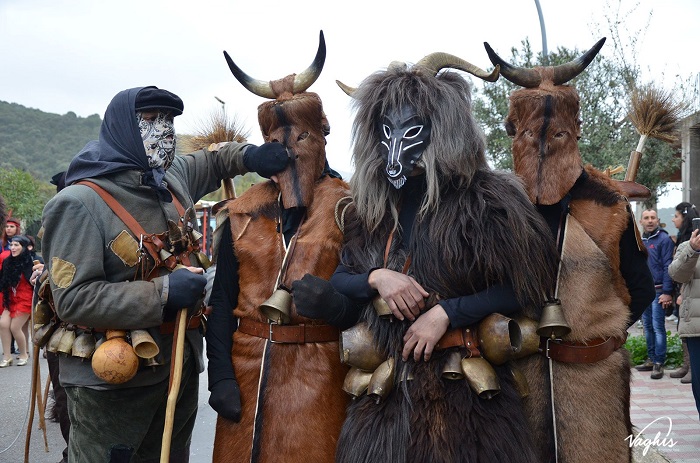
The Carnival of the Mamuthones is a pre-Christian tradition dating back more than 2,000 years. The monstrous characters boast thick hair, dark faces and carry cattle bells hanging around their bodies. To this day, they still scare children as they pass through the villages, but this thousand-year-old tradition continues… Coming to this Sardinian tourist destination you need to pay attention to the stone sculptures The carved granite is the Menhir of Perda Pinta, dating from 3200 BC.
Santa Teresa Gallura
Situated on a narrow strip of land on the Strait of Bonifacio, Santa Teresa Gallura is an oasis of greenery and ocean, with vegetation, granite rocks and cool, clear blue waters. Find a beach with views of the nearby French island of Corsica or visit the Tomb of the Giants, a megalithic archaeological site dating back to the Bronze Age. In summer, the town’s main square bustles with shops and restaurants.
You can walk through Santa Teresa’s picturesque center to reach the Longosardo Spanish Tower. This is the largest tower built by the Spaniards in Sardinia. Going up the outside stairs to the top of the tower will be the perfect place to enjoy the panoramic view of the Bonifacio Strait and take beautiful photos.
Castelsardo
A town on the northwest coast of Sardinia known as one of the “most beautiful towns in Italy” with a medieval fortress surrounded by nature and steeped in history and religious traditions and ancient crafts. This is one of the loveliest towns in Italy, with a medieval fortress surrounded by nature and filled with history, religious traditions and ancient crafts.
With many paths, this is a really great place to explore Castello dei Doria on foot.
It is located on a promontory in Anglona, in the center of Asinara Bay in northwestern Sardinia. Castles and fortresses were built contemporaneously with the town’s origins, while the ruins of several watchtowers add to Castelsardo’s antiquity. With many paths, this is a really great place to explore on foot, with Castello dei Doria arguably the main highlight.
Tempio Pausania
During the mid-winter months, the sleepy town of Tempio in northern Sardinia is transformed with lively and colorful festivals. The carnival in Tempio Pausania is celebrated with parades, elaborately decorated floats, and masked performers on foot and on horseback.
The tourist place is known as “the city of rocks” – a place to relax amid parks, streams and healthy mountain air. Tempio Pausania is a large town of 14,000 residents with a picturesque old town of granite-clad buildings, with tree-lined streets.
Cala Brandinchi
This beach is a famous place in Sardinia, it is so beautiful that the locals call it Little Tahiti. Surrounded by a cool pine forest on one side and turquoise water on the other, the soft white sand creates a scene in a paradise. There are private beach clubs that rent sun loungers and umbrellas, or you can rent a rustic villa with private beach access. The simple but well-appointed house can accommodate up to eight guests and makes for the perfect stay.
Orgosolo

If you are tempted to experience its culture and history, you can visit the town of Orgosolo during Carnival in January. Carnival is one of the oldest ones in Europe, dating back thousands of years. Here, visitors will be immersed in the Mamunthones procession with men wearing fur masks and sheep bells on their backs to ward off evil spirits. The murals in Orgosolo are also loved by many tourists and have a rich history.
A must-see itinerary from Sardinia
Take a day trip out of Sardinia to Tavolara. Tavolara is a rocky island off the east coast, it is a granite outcrop surrounded by turquoise water creating breathtaking scenery. You can travel to Tavolara by boat departing from Olbia.
Or another cruise will take you north to La Maddalena, a small archipelago off the coast of Sardinia that has been a popular tourist destination in recent years. La Maddalena includes 7 islands scattered with dreamlike beaches surrounded by majestic cliffs, vast pine forests and countless giant oleander bushes blooming brightly.
What and where to eat in Sardinia island?
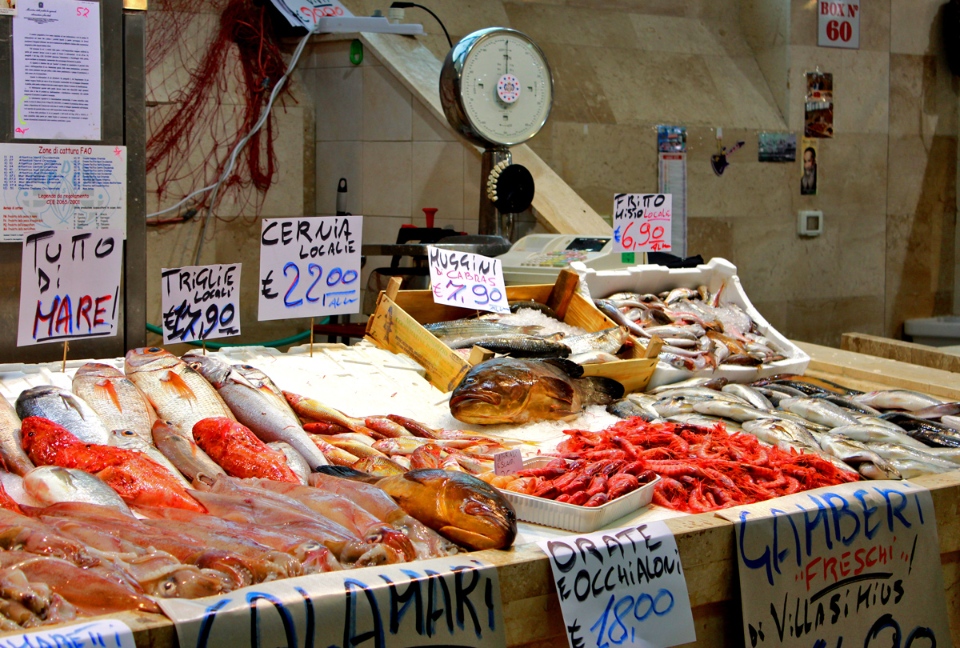
Like other Italian destinations, Sardinia is rich in delicious food. Coffee is an art here, you can order a cup of espresso to start your day with energy. Sardinia also has local vineyards, which produce Sardinian wines, such as white vermentino, red cannonau and white vernaccia. You can try this and other Sardinian wines at enotecas or wine bars around the island, or you can plan to visit wineries or cellars for tastings.
The island also has specialty breads, pasta, cheese, meat, fish, seafood and sweets. Firm, tangy pecorino cheese is a Sardinian specialty, as are creamy goat cheeses, such as ircano and caprino. The island’s various pastas include a saffron-flavored malloreddus pasta and a ravioli stuffed with pecorino or ricotta, called culurgiones.
Lobster, tuna and octopus are all abundant on Sardinian menus. Meanwhile, Sardinia’s sweets vary from region to region, with different parts of the island adding ingredients, such as cinnamon, mulled wine, vanilla or orange blossom, to the traditional papassino, a dessert The mouth is made of raisins.
Please note: restaurants usually open at 12:00 – 15:00 and 19:00 – 22:00. And many restaurants only open in the evening (19:00 – 23:00 – 1:00 p.m.), so you should check out in advance so you don’t have to waste time finding the restaurant.
Regarding the cost of food and drink, I think it’s the same as a hotel. If you have high needs, there is no shortage of luxury places.
In any city or town 100, 200 euros/person (of course if you spend a large amount of money, you will enjoy the beautiful view, atmosphere, service, uniqueness of the food…). On average, it costs 10 – 25 euros / person.
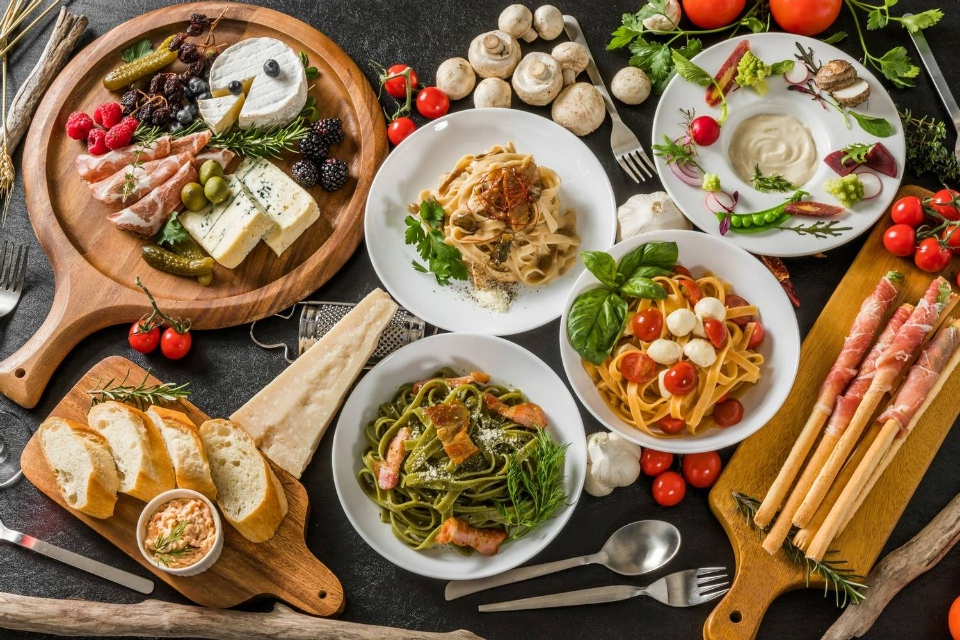
Culurgiones, bottomarga, saedas are just some strange but really delicious dishes. Sardinia has a cuisine unlike most of the Italian cuisine you may be familiar with. You’ll find the usual pasta, cheese and wine but with a unique twist.
Pecorino Fiore Sardo
You may be surprised to learn that one of the staple foods of this paradise island is not some type of seafood but instead simple sheep’s milk cheese. This is a mild, creamy cheese that is made from the milk of the Sard breed of sheep. It is a DOP product, which means it is protected and regulated with very strict rules and standards. Pieces of pecorino will likely be on your breakfast buffet, in your lunch sandwiches and as part of your antipasti platter. When young, it will have a clean, grassy taste, while aged cheese will have a saffron aroma. You can buy this cheese at daily or weekly farmers markets.
Pane Carasau
This cracker-thin bread is described in Italian as Carta di Musica. Pane Carasau is made into large circles, nearly 60cm wide, they are grilled and then sold in tall stacks.
Pane Carasau originates from the north of the island and has a very long shelf life. This made it a staple of shepherds, who might take it with them on long treks in the mountains with their flocks. You’ll find it in your aperitif served with a glass of wine and in the bread basket at the dinner table. In Porto Torres, try the traditional Li Lioni or take home a triangular souvenir wrapped in beautifully lettered packaging.
Culurgiones
Culurgiones translates to small bunches in English and is a pierogis that meets the Sardinian style of ravioli. Simple semolina stuffed with mashed potatoes and topped with fresh mint and sheep’s milk ricotta cheese.
The bundles are tied closed with an intricate braid and served with a light tomato sauce. Try these famous dishes in Ogliastra, where they originated. We recommend La Pineta on a country road near Arzana.
Fregola
More like canned pasta than a typical Italian pasta, fregola is made with the same semolina and water. The difference comes in the way this dish is made: it is rolled into small coarse pebbles then lightly grilled. This final step creates a complex base, perfect for simmering in seafood sauces. You’ll find fregola on menus throughout the southern part of the island, mainly near Cagliari.
Niu Cagliari is a restaurant that combines tradition with modernity in an airy, sophisticated space in the center of town and is one of the best places to order a plate of fregola.
Bottarga di Muggine
There is not much seafood in the traditional Sardinian diet because most of the population was historically shepherds rather than fishermen. Bottarga di Muggine is sun-dried gray mullet roe and is a most prized ingredient. They are often sprinkled on spaghetti to give a rich and salty taste to simple spaghetti noodles.
At Ristorante Spinnaker in Porto Cervo, you can enjoy your bottarga spaghetti with a bottle of one of the island’s best whites.
Seadas
In Sardinia, fried honey cheese is a sweet end to a meal. Made from the ubiquitous semolina pasta wrapped around pecorino cheese, it’s always light and quite easy to eat with chunks of lemon zest sprinkled on too. Seadas can be as small or as big as your plate. After frying, they are covered with a very special corbezzolo bitter honey, which has a slightly bitter taste. It’s sweet, creamy, and you’ll find it on almost every menu.
We recommend trying it at a marble-topped table at Trattoria Lillicu in Cagliari.
Mirto liqueur
At the end of a long meal, you will likely be brought with you a chilled glass containing concentrated syrup. Italians attach great importance to a digestive dish to complete the feast and help with better digestion. This finishing wine is called mirto and it is made from dark green berries from the myrtle bushes that grow all over the island.
Where to stay?
Below we recommend more best budget, mid-range and upscale hotels with good ratings and reviews you can refer to.
- Hotel Nautilus (Agoda, Booking)
- Costa Dei Fiori Hotel (Agoda, Booking)
- Hotel Italia (Agoda, Booking)
- Hotel Residence Ulivi E Palme (Agoda, Booking)
- Albergo Diffuso Birkin Castello (Agoda, Booking)
- Palazzo Doglio (Agoda, Booking)
- UNAHOTELS T Hotel Cagliari (Agoda, Booking)
- Hotel Regina Margherita (Agoda, Booking)
Check out more top and best hotels in Sardinia on Agoda.com or Booking.com
What you need to know when traveling to the island of Sardinia
- Buy authentic handicrafts: When shopping, look for baskets, ceramics, jewelry, rugs, linen napkins and more that have the ISOLA tag, which certifies that the item is an authentic, made in Sardinia.
- Stick to certain areas: With 9,301 square miles, Sardinia may be too large to explore in one trip, so pick an area and enjoy its attractions and restaurants to make the most of your time.
- Book early: Be sure to book your room several months in advance of your trip as availability, especially during peak season (July to August), may be limited.
Some best day tours, trips, activities and transfer services, tickets in, from and to Sardinia you can refer to
- Half-Day Dive Trip in Alghero with PADI 5 Star Dive Resort
- PADI Discovery Scuba Diving in Alghero with PADI 5 Star Dive Resort
- PADI Open Water Diver in Sardinia with PADI Resort
- PADI Scuba Refresher in Alghero with PADI 5 Star Dive Resort
- PADI AOWD [eLearning] in Alghero with PADI 5 Star Dive Resort
Read more Italy guide here.
































